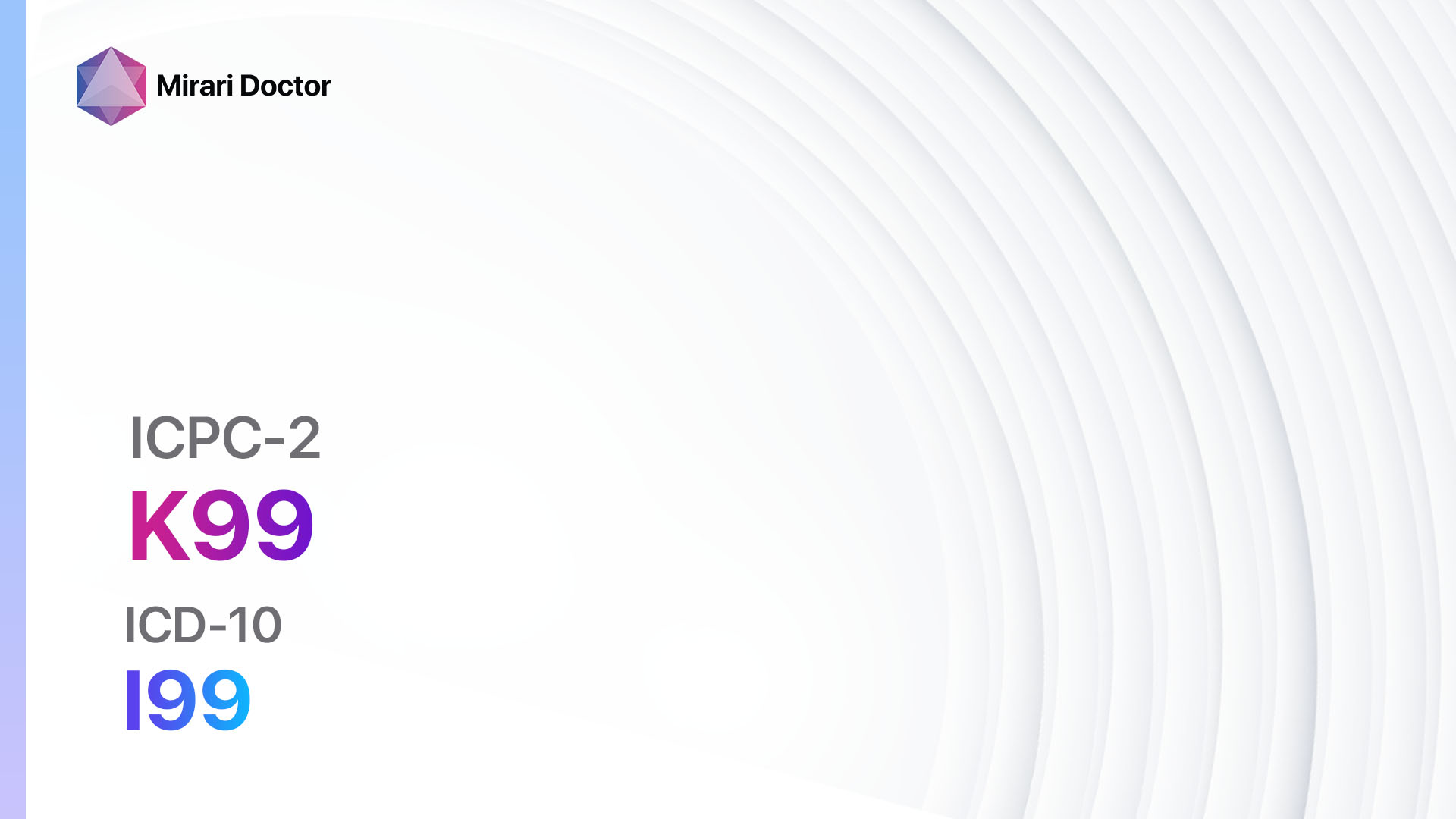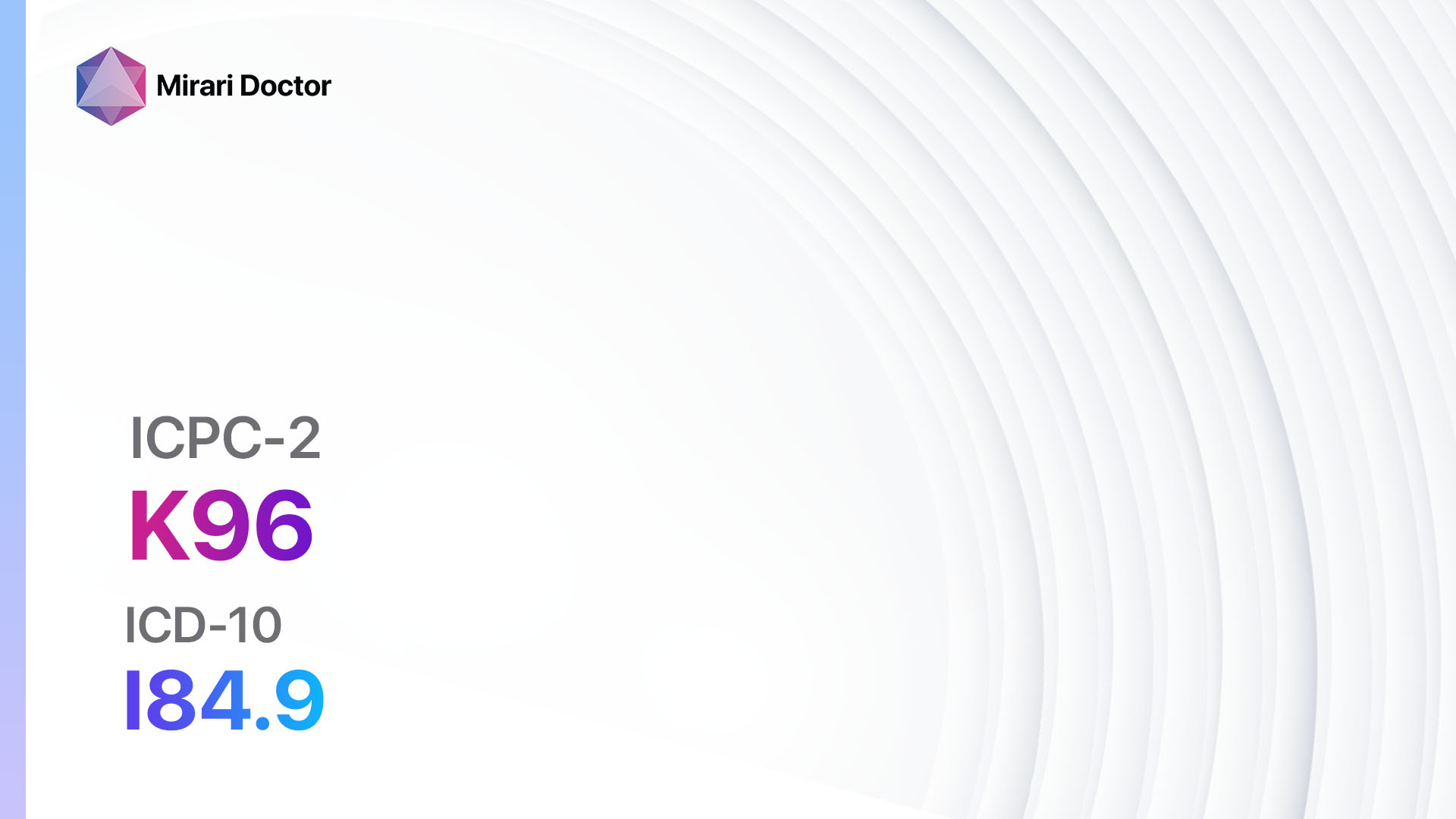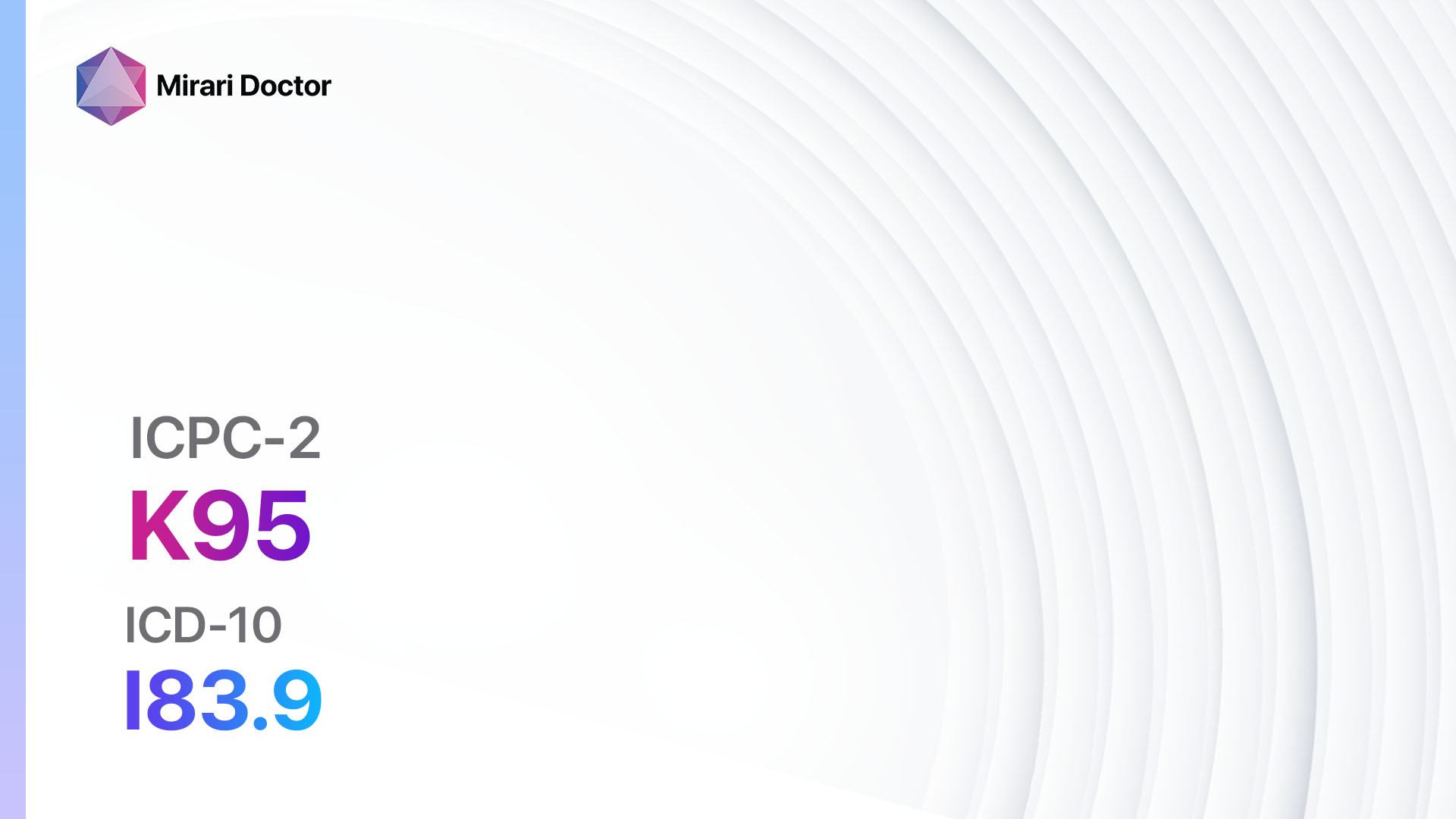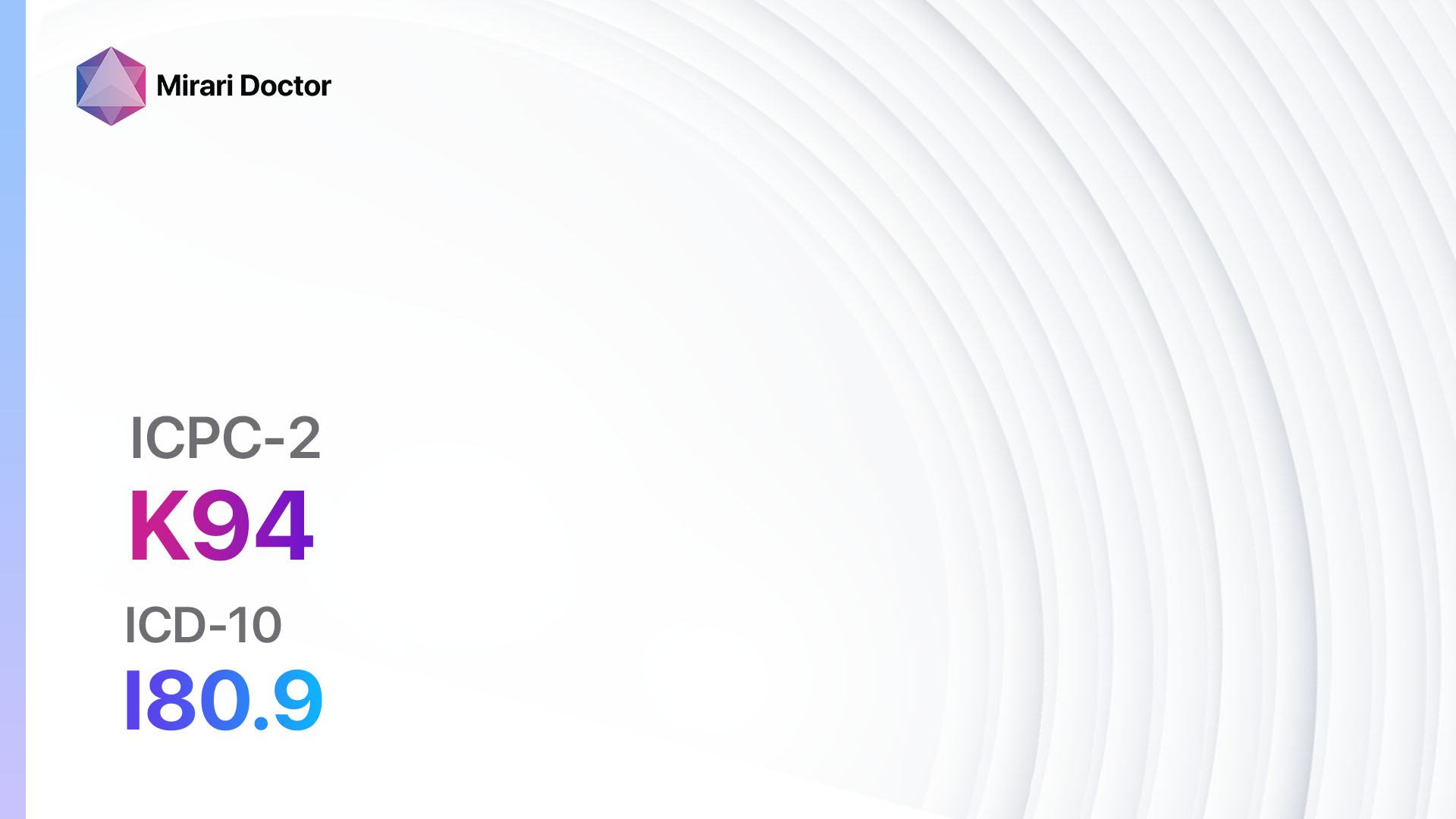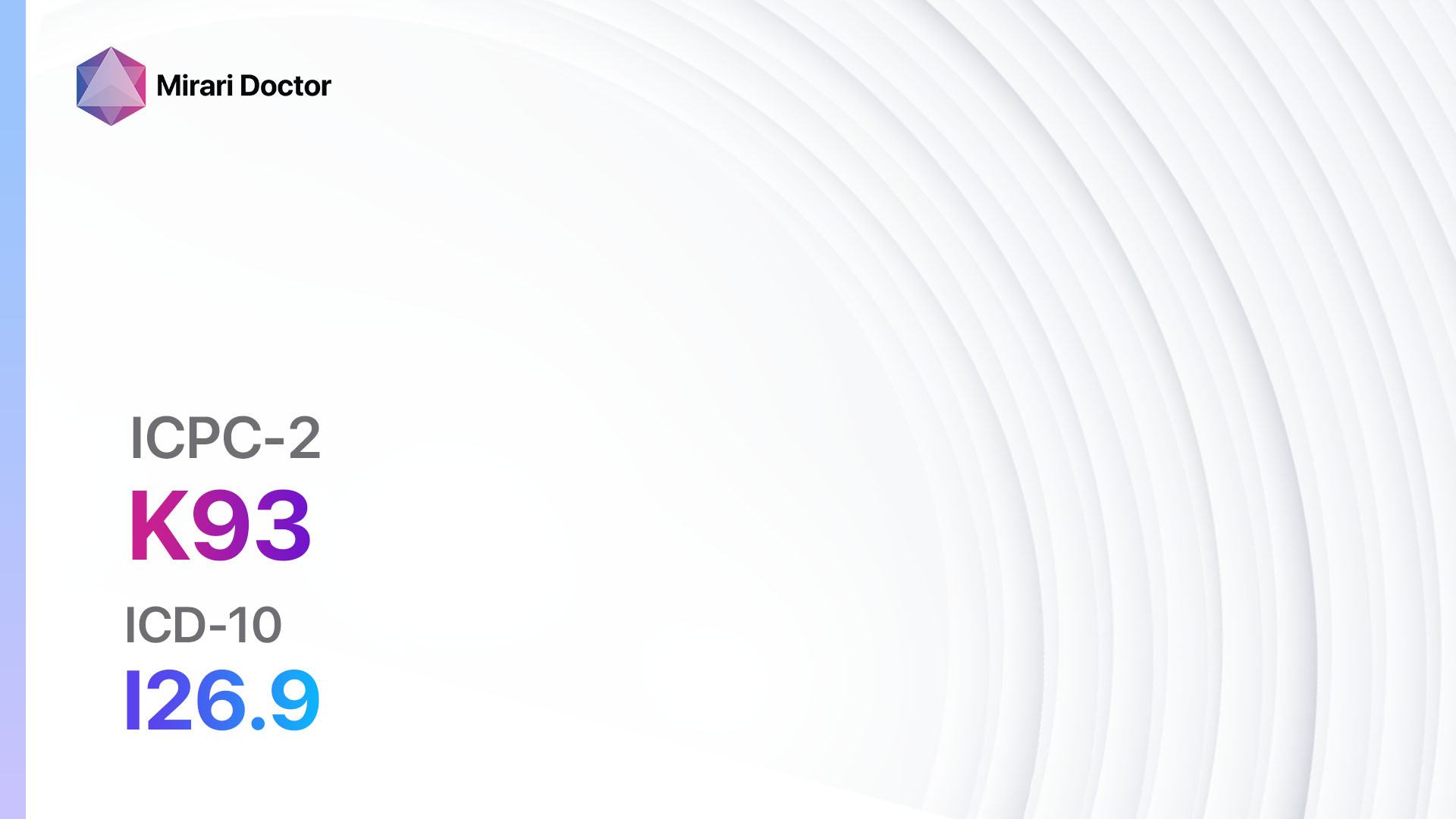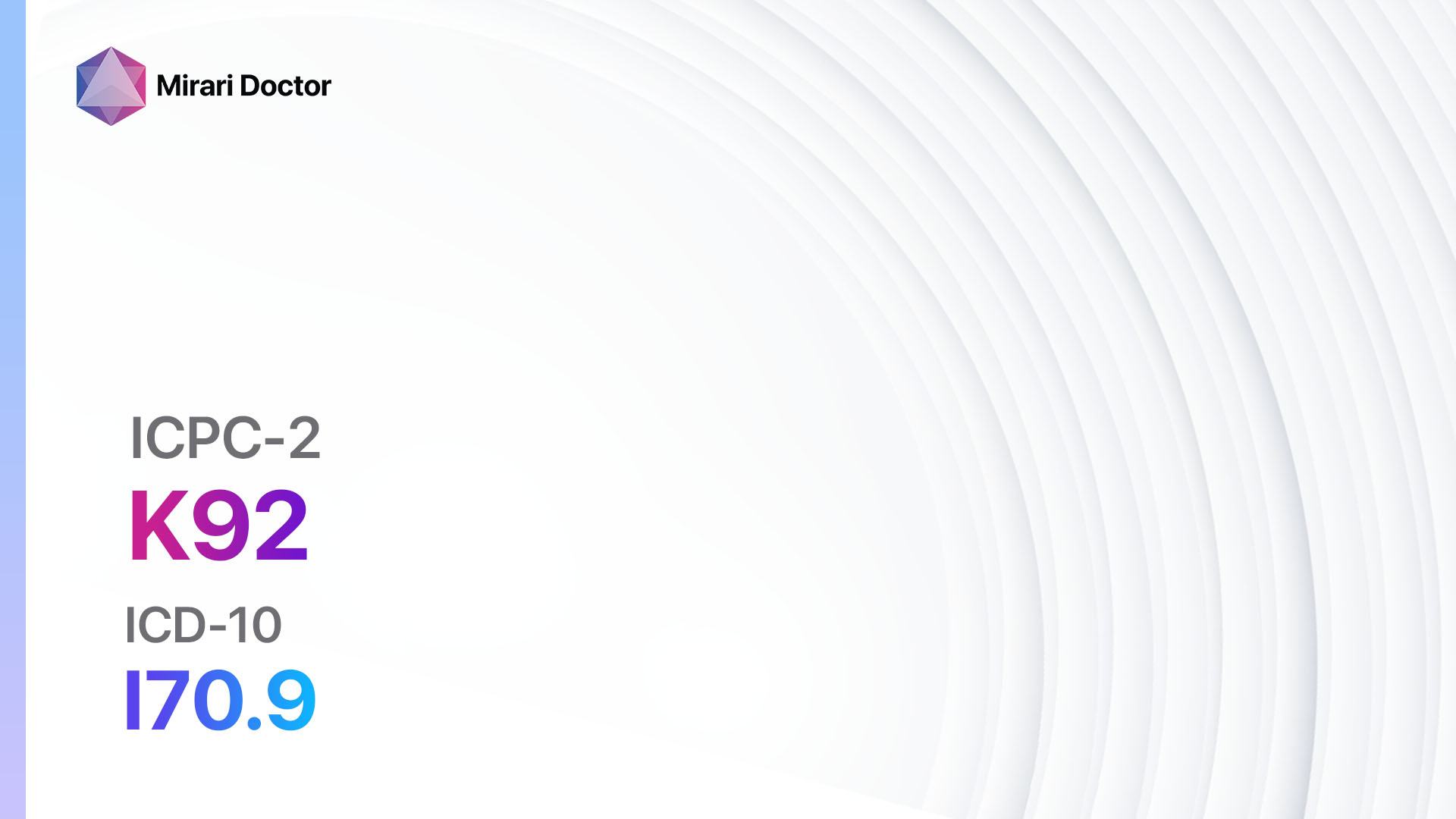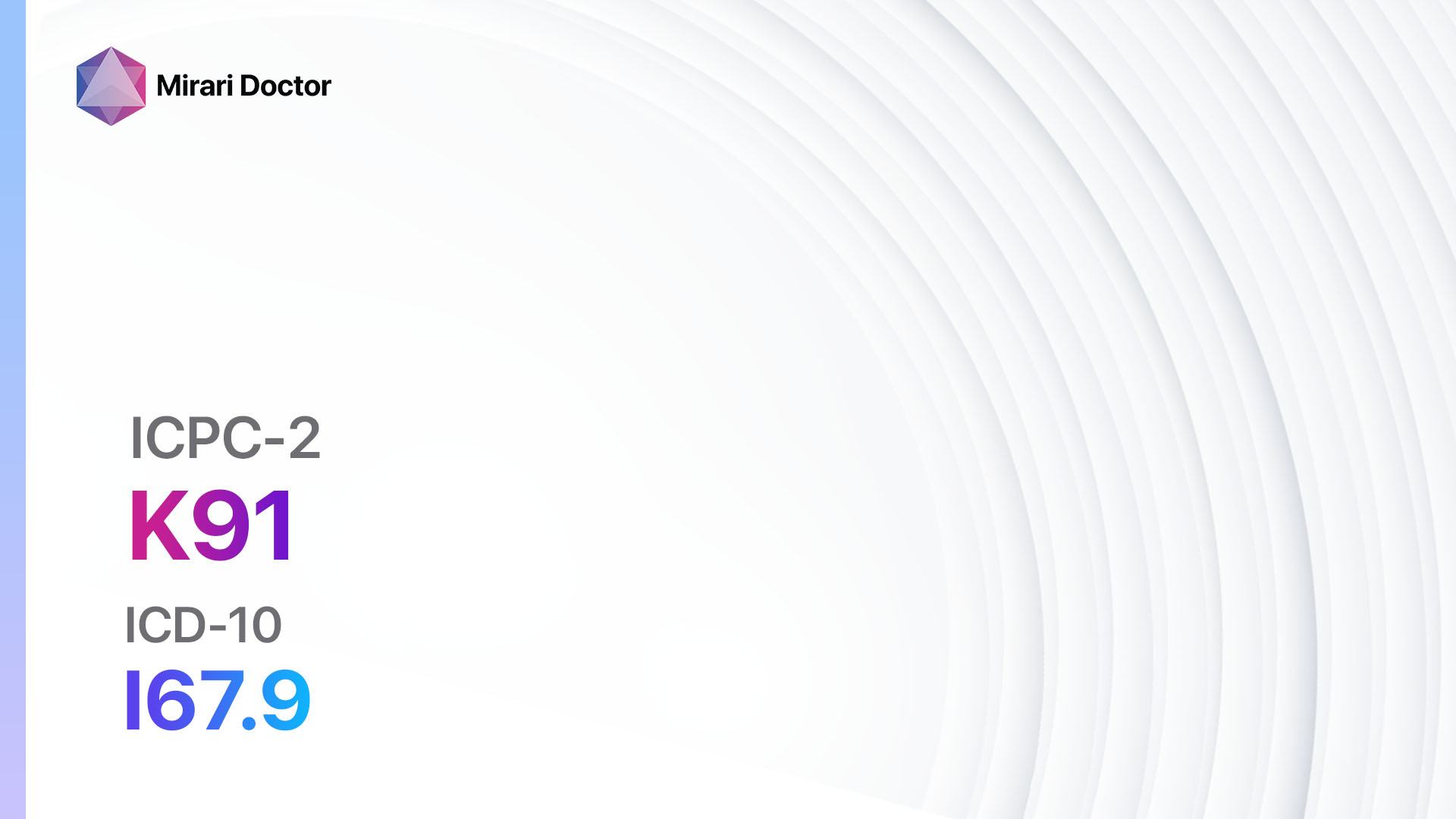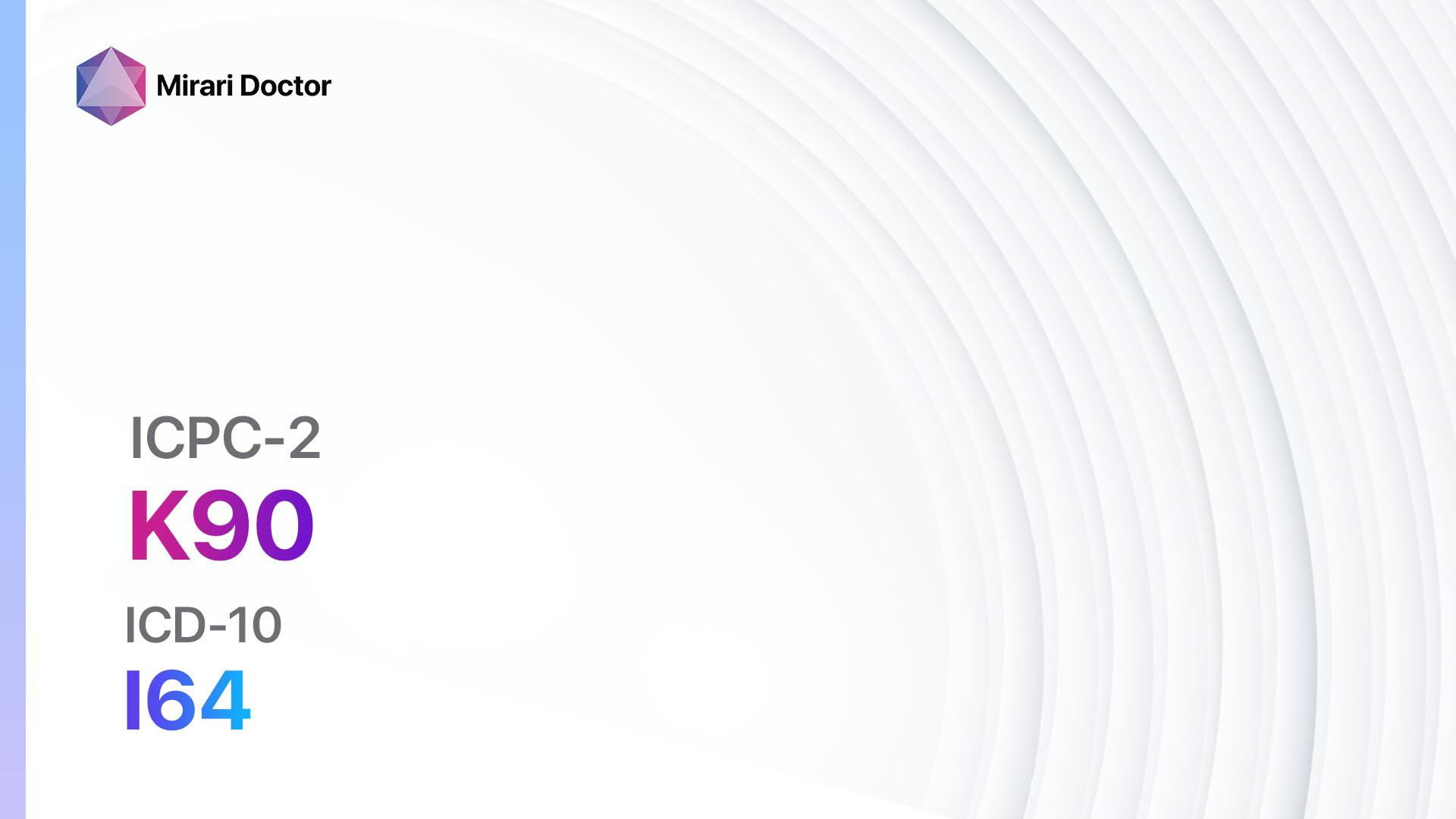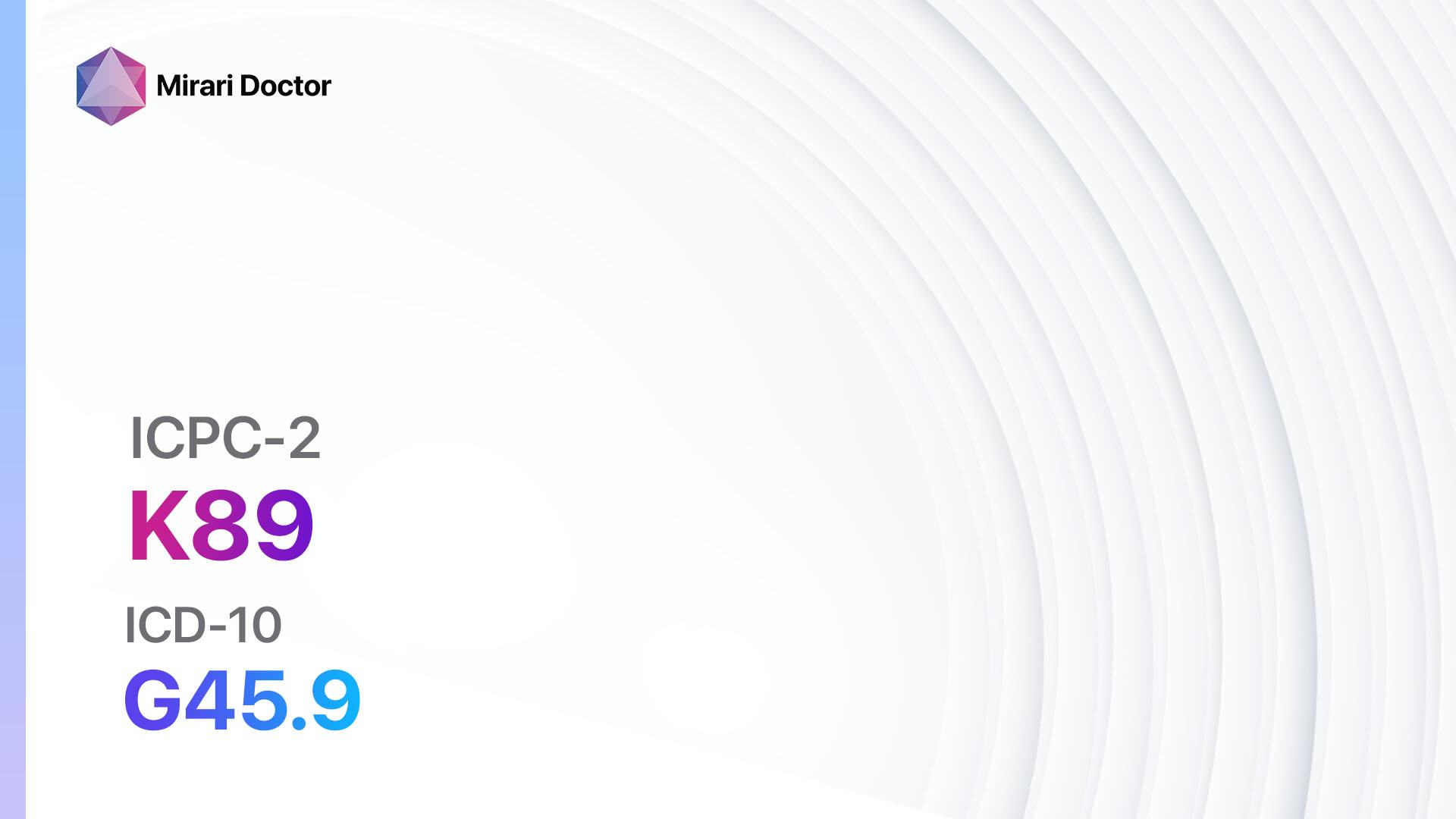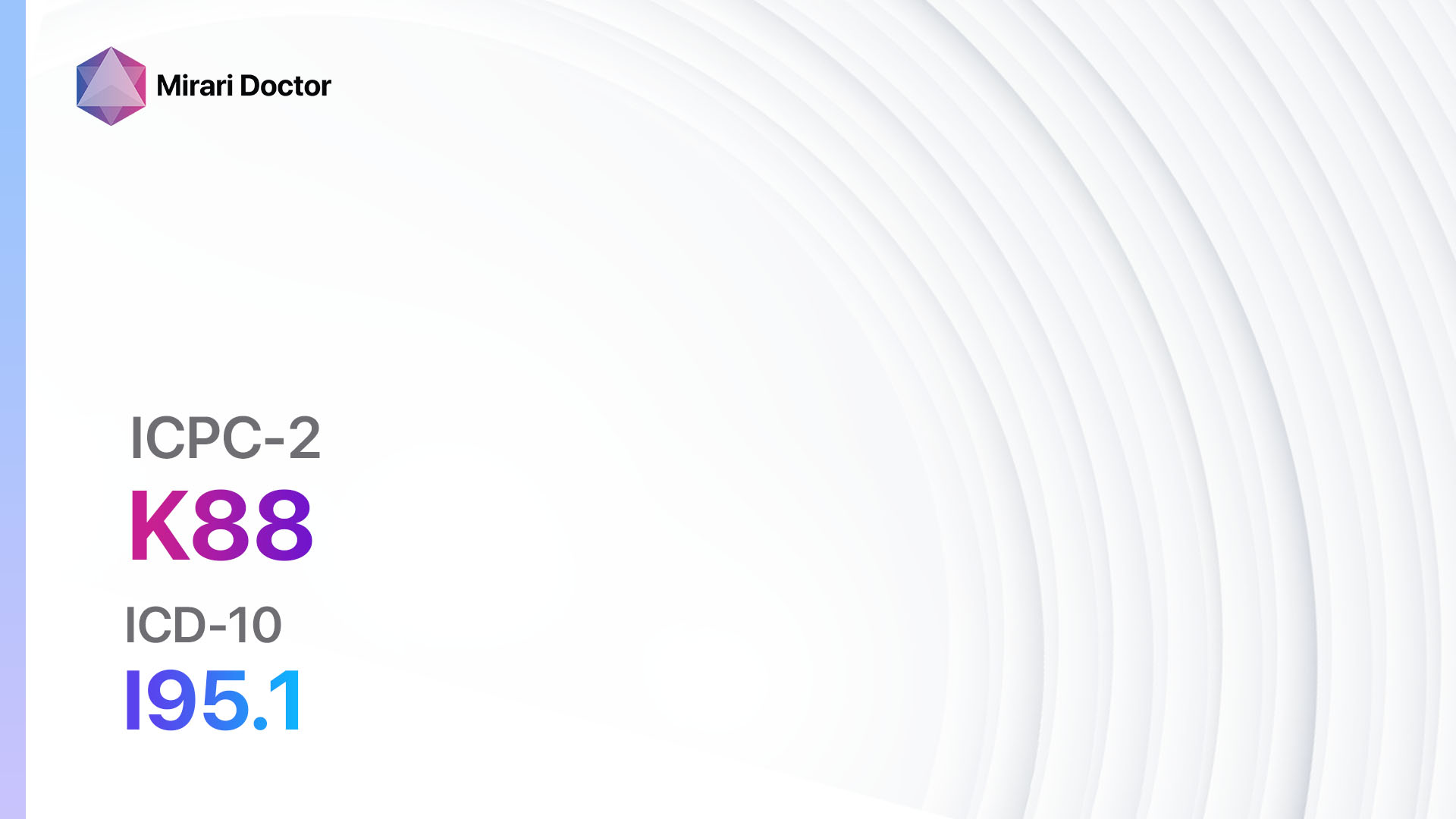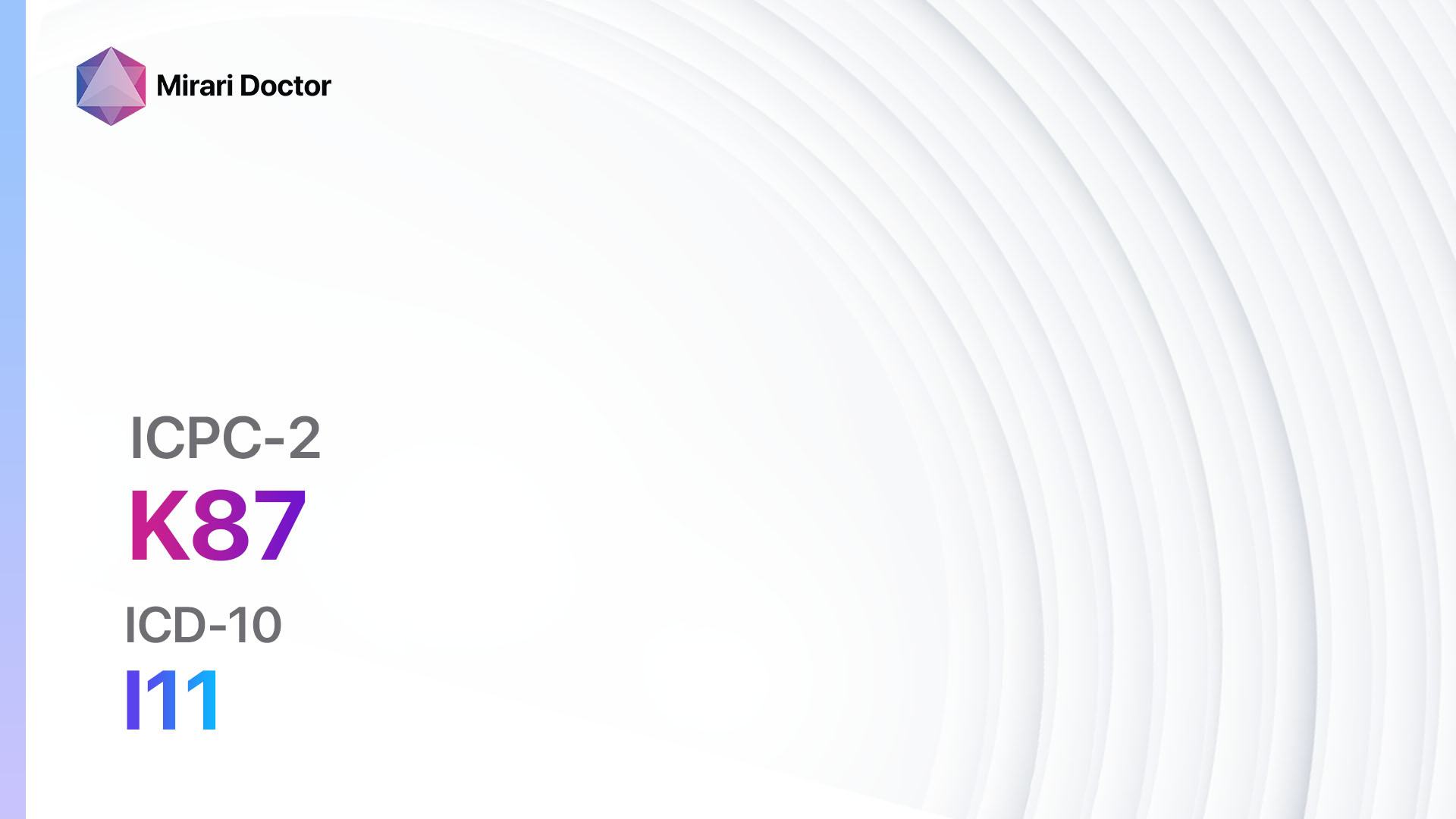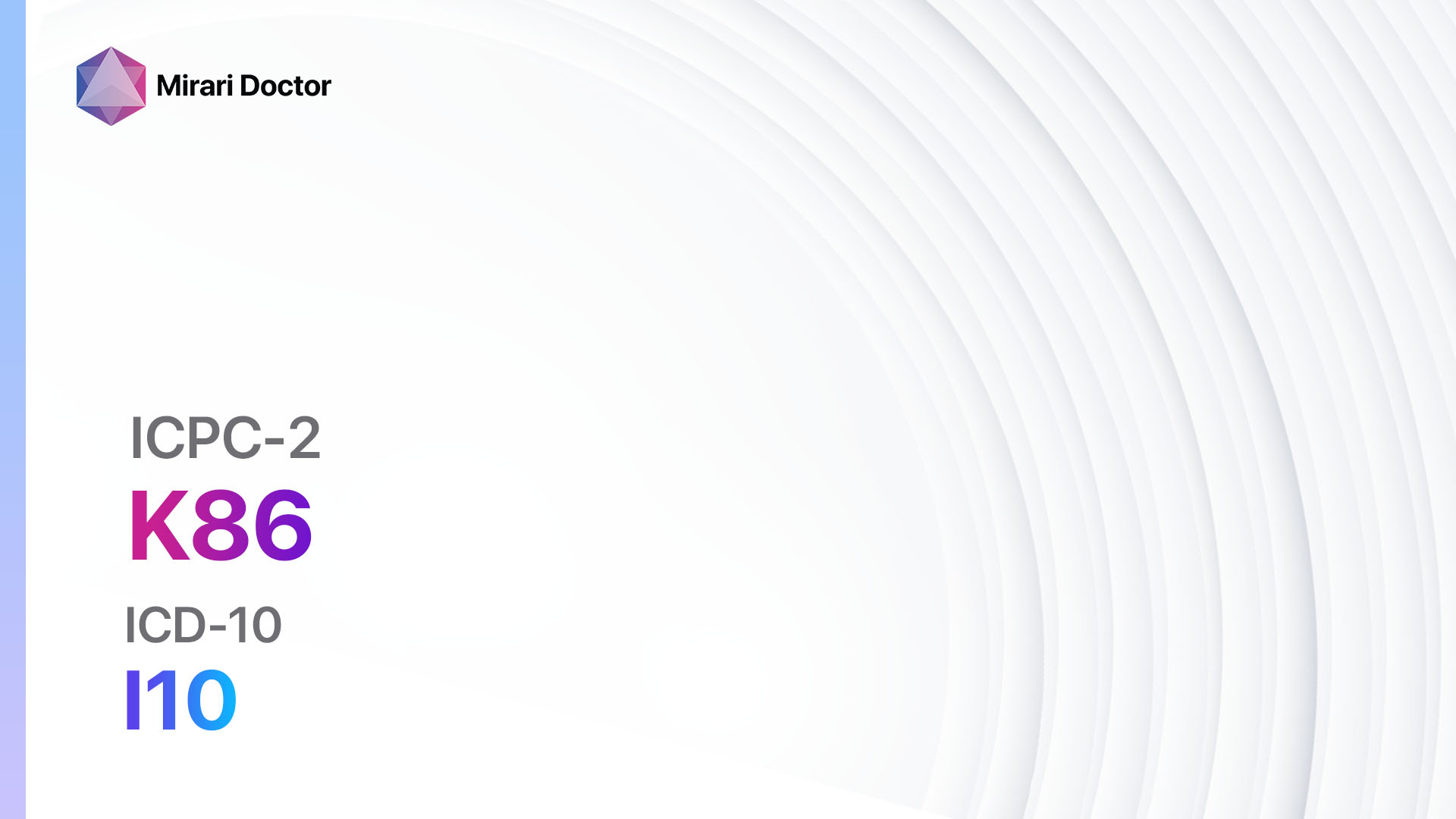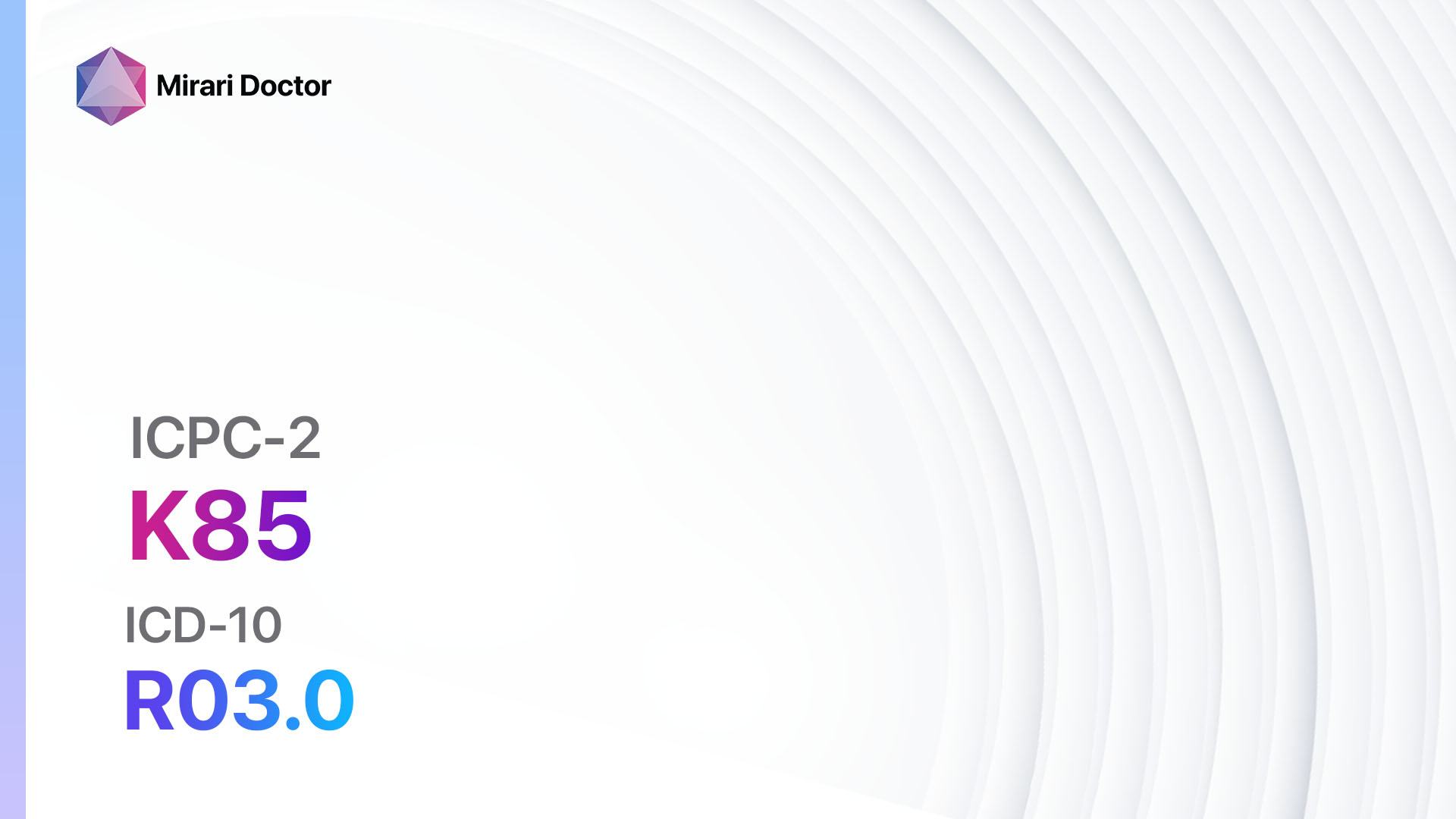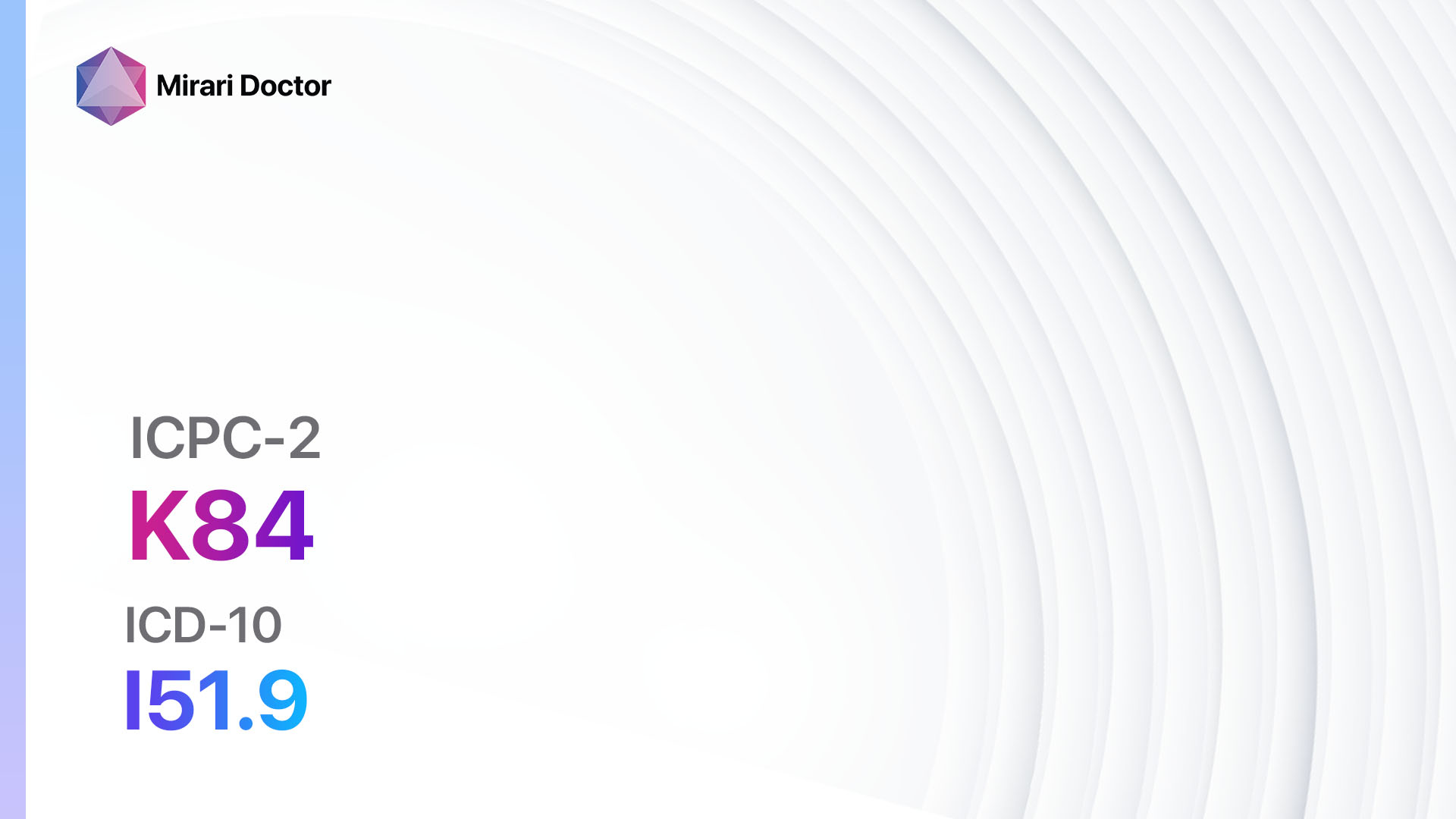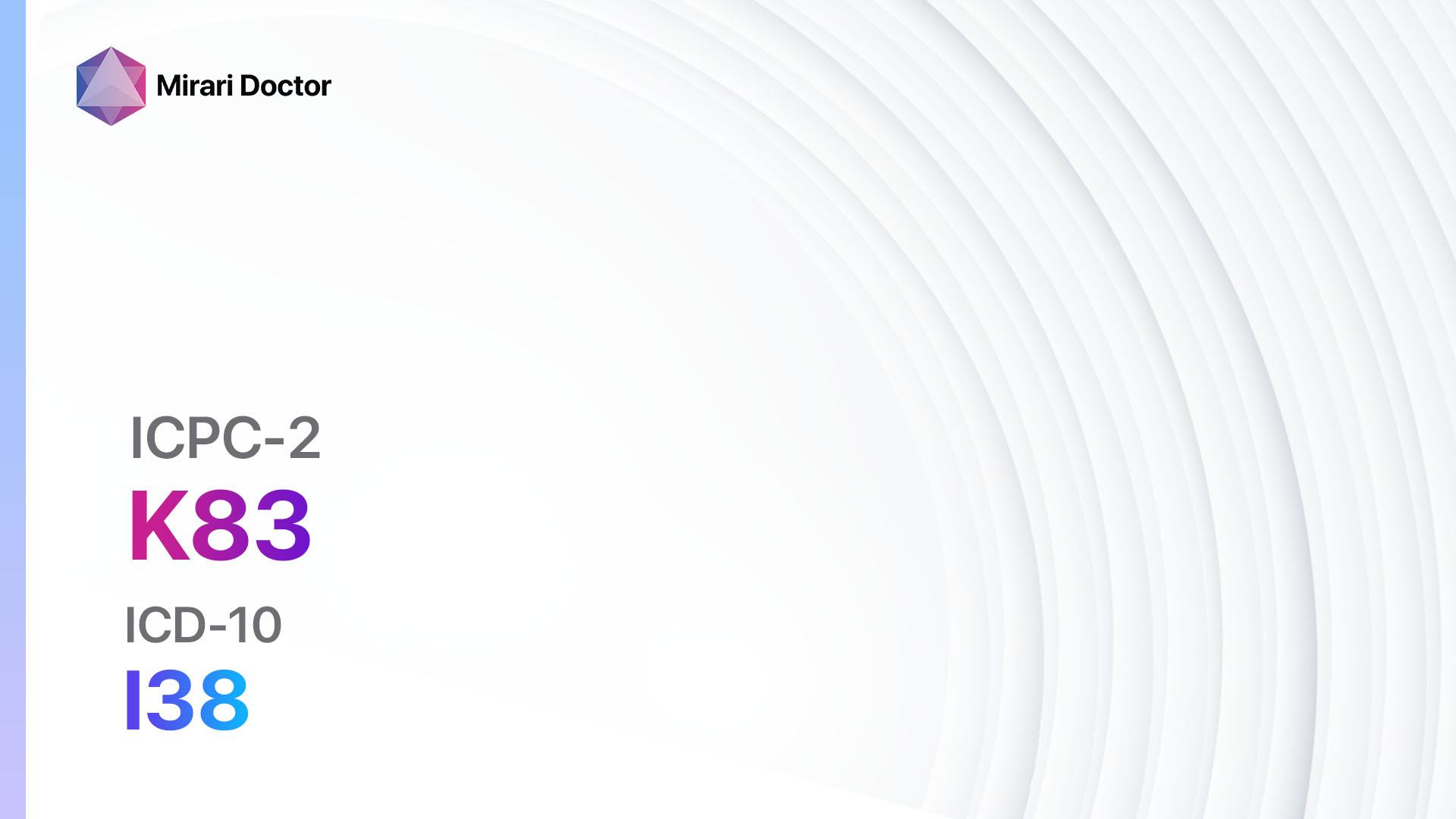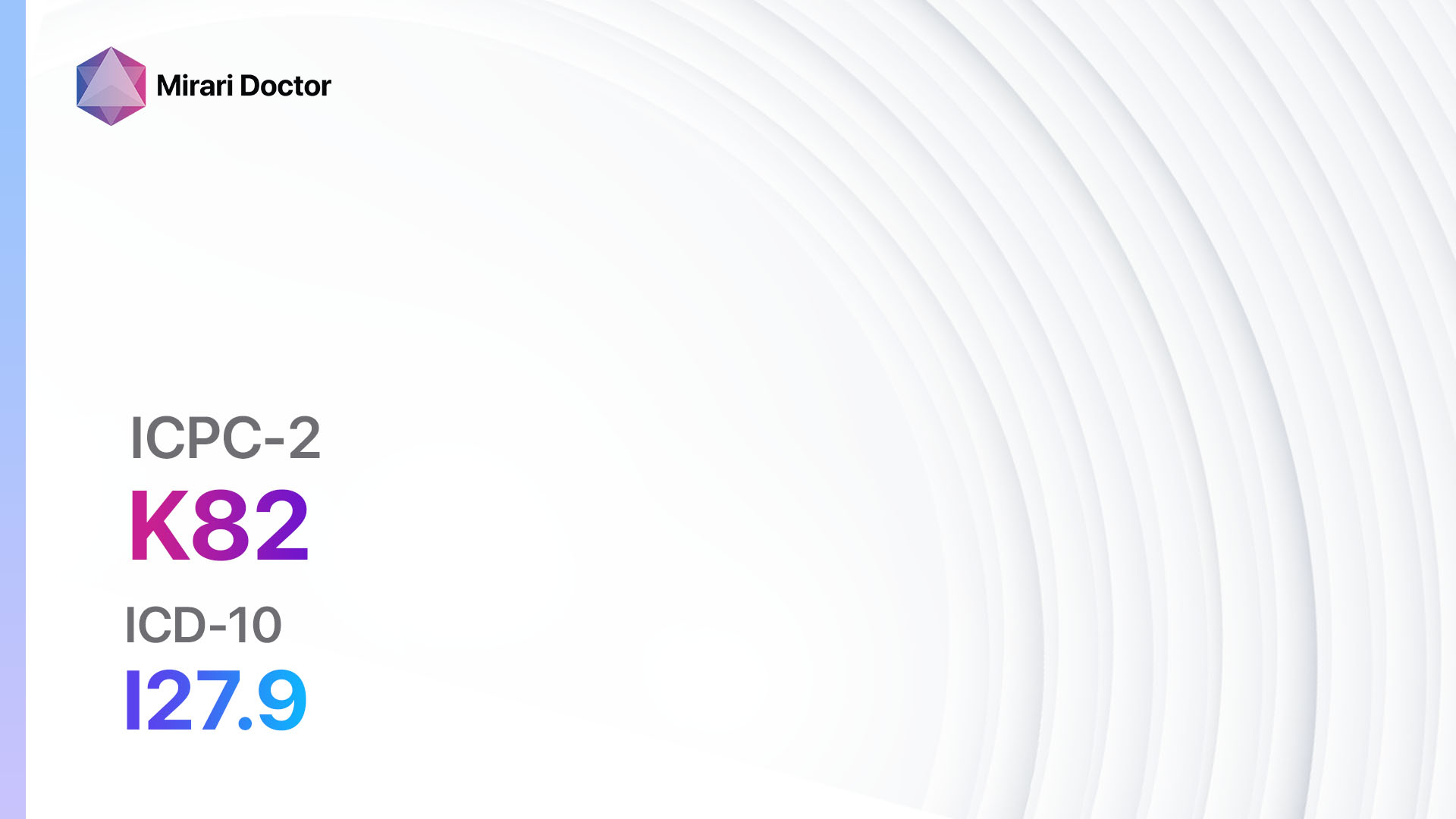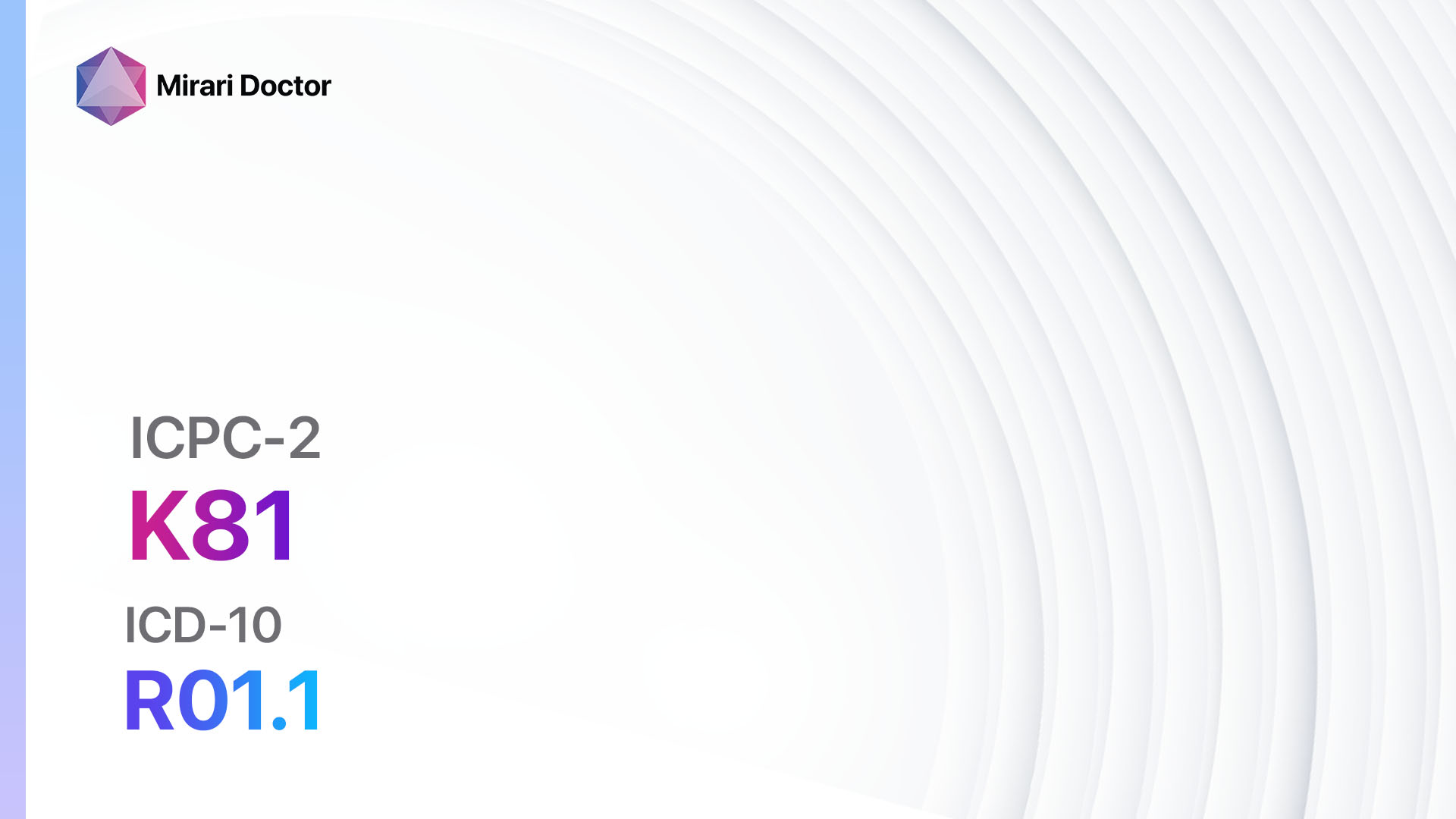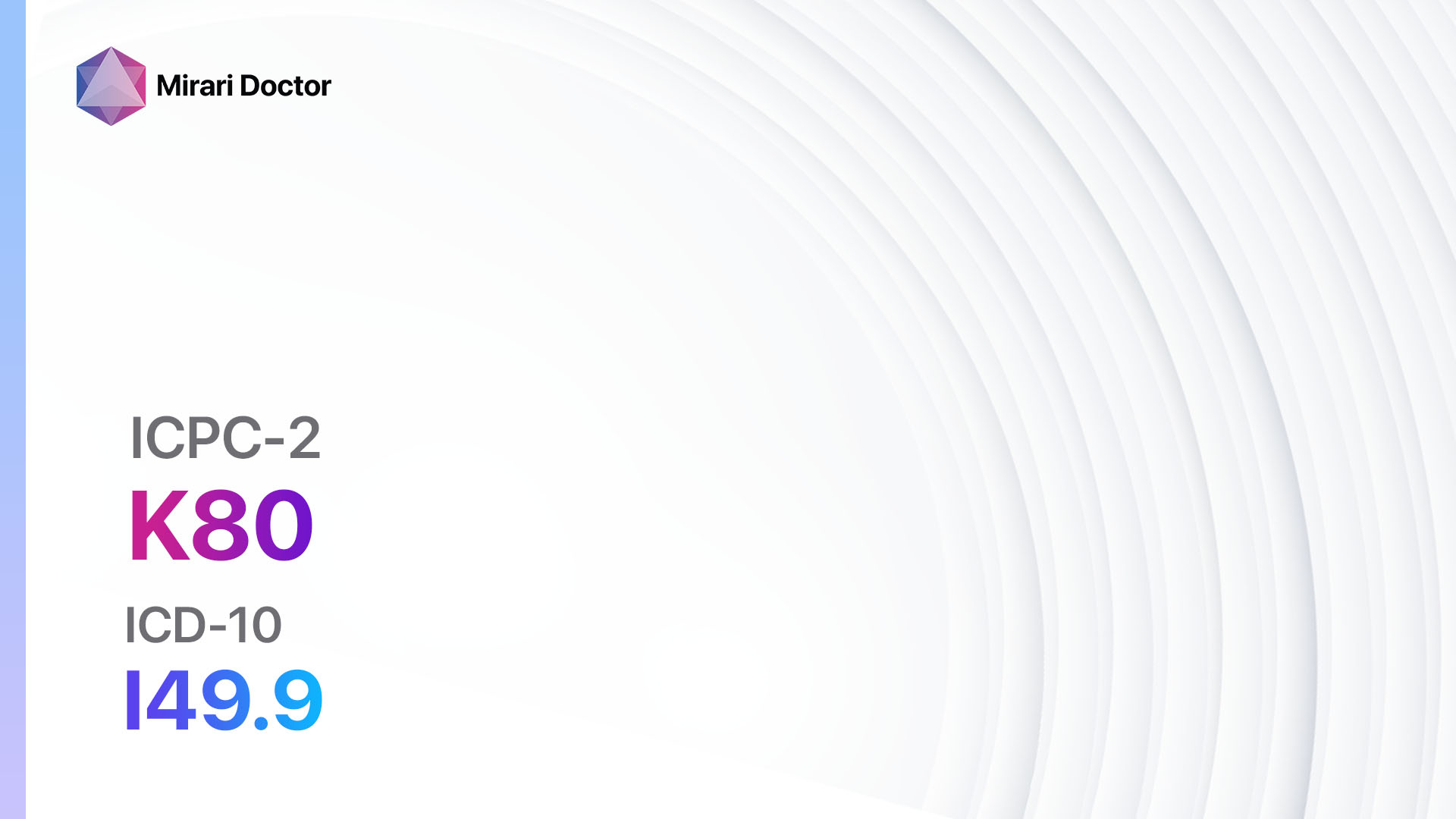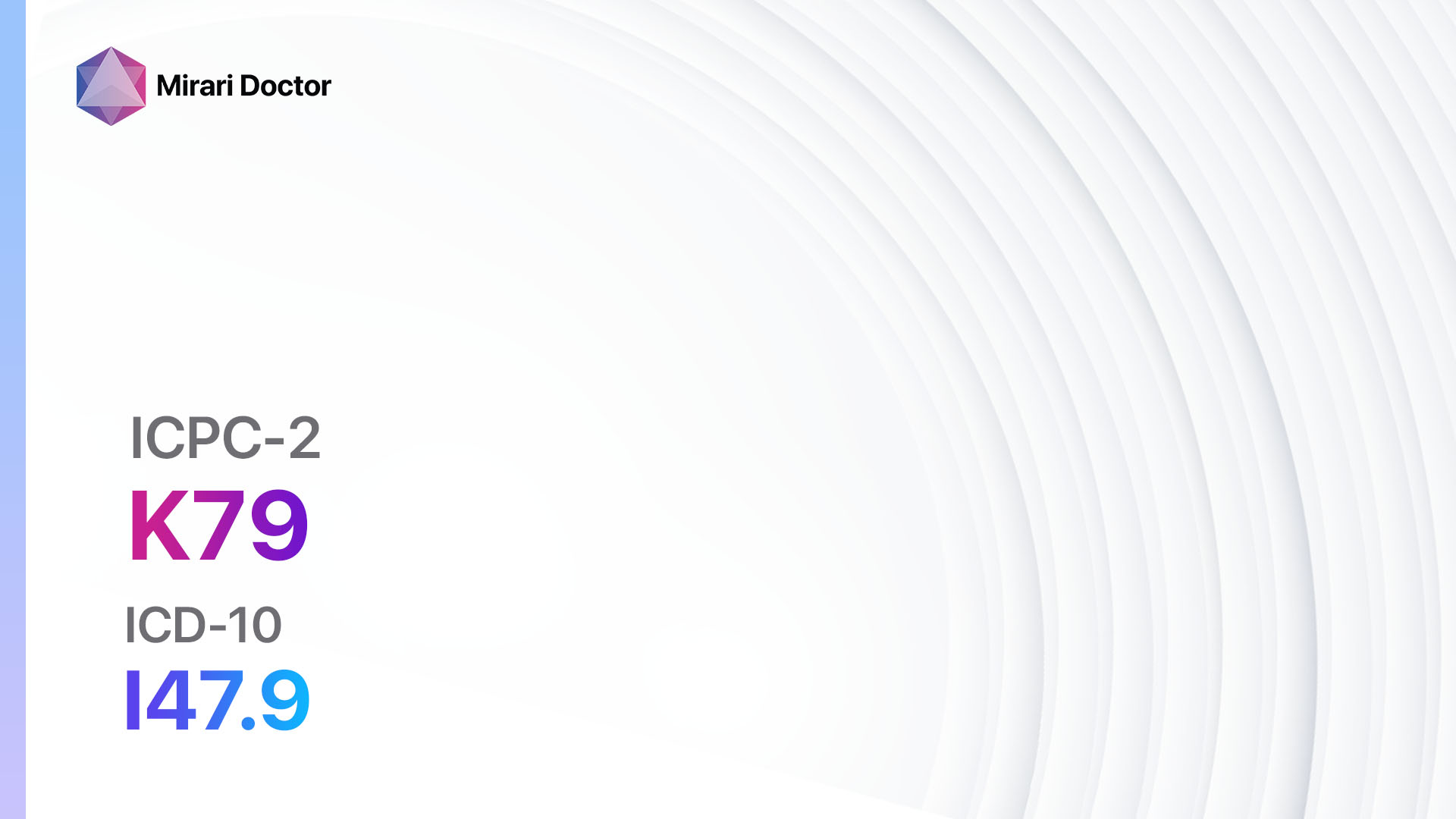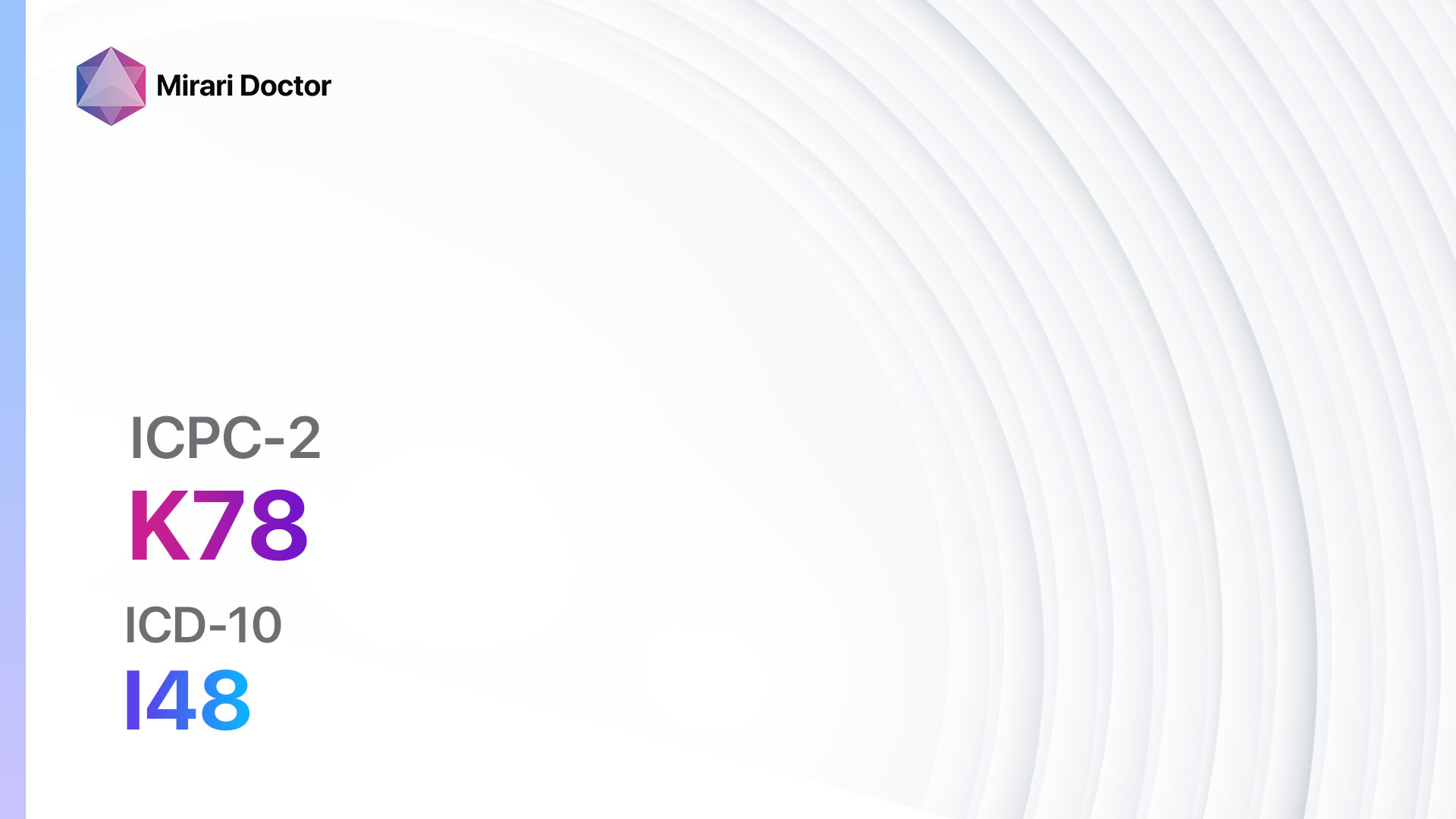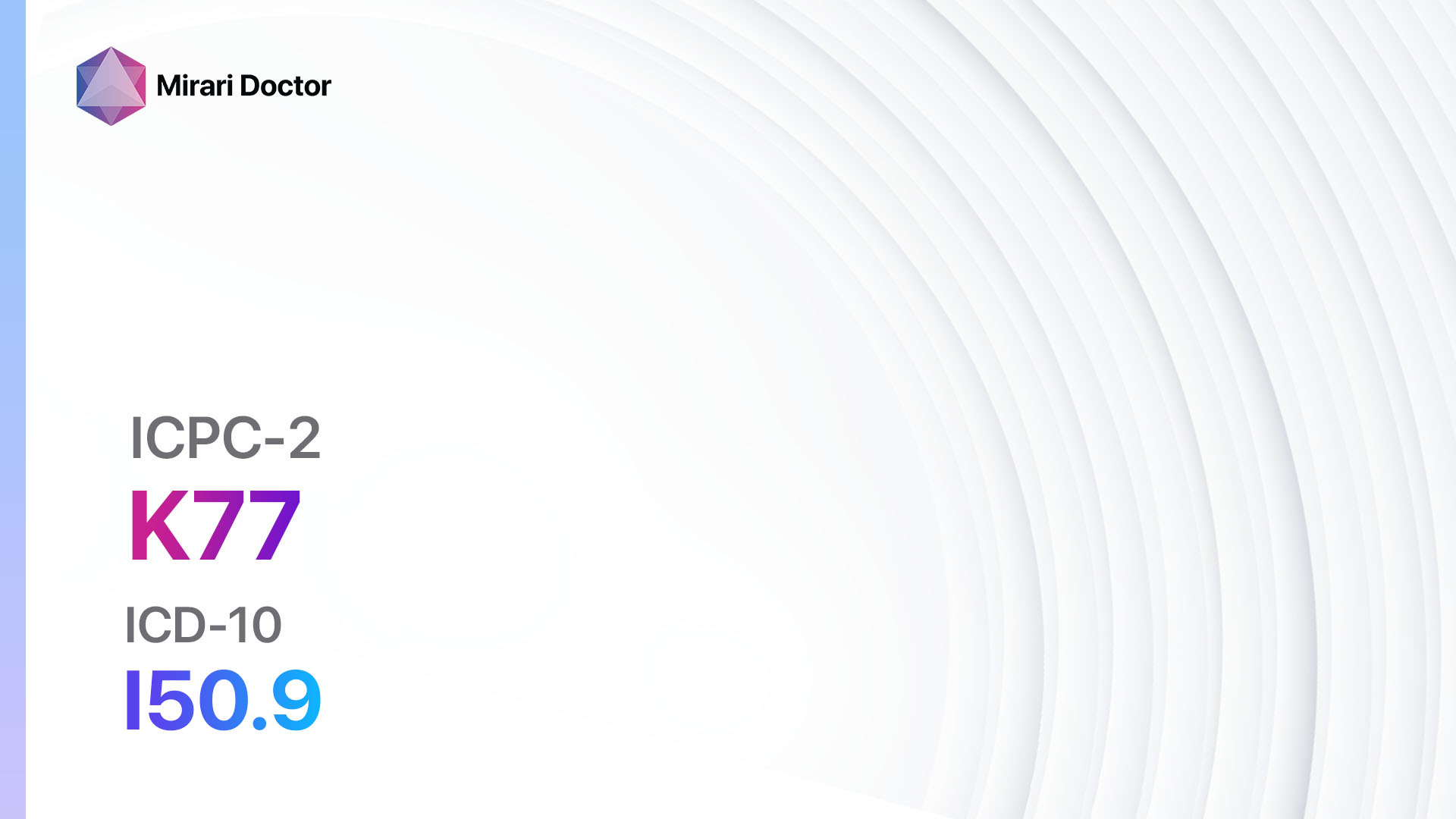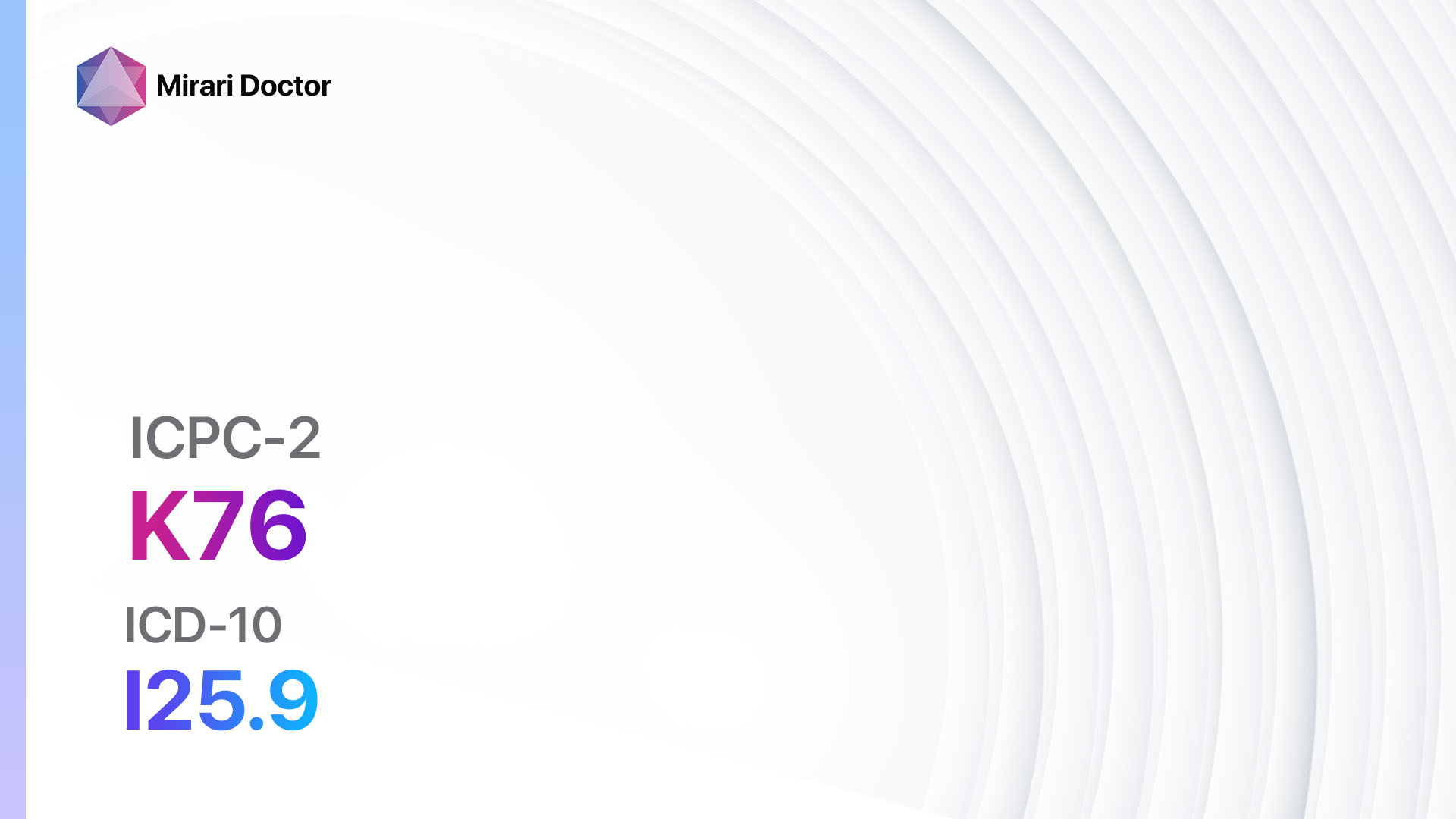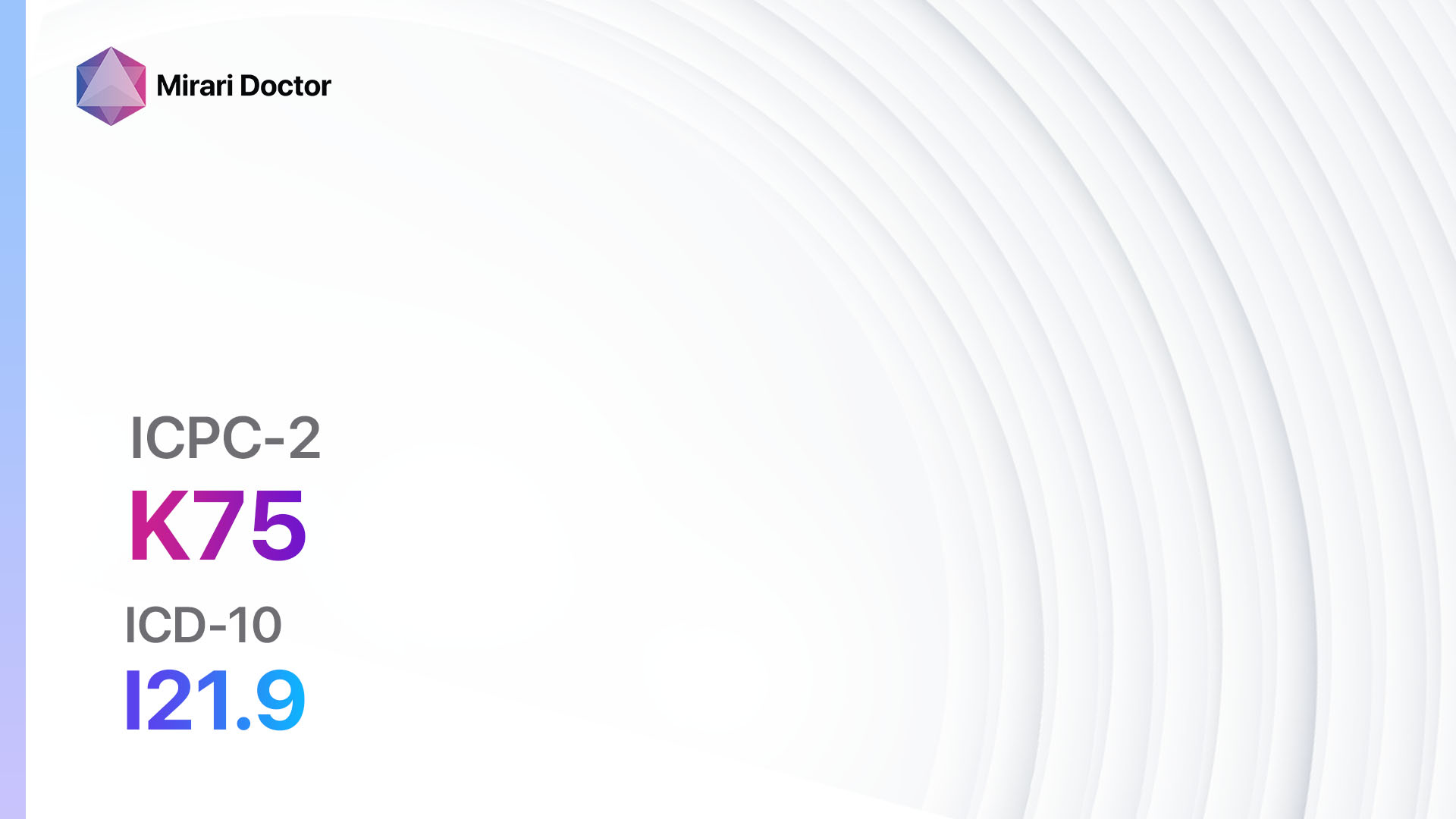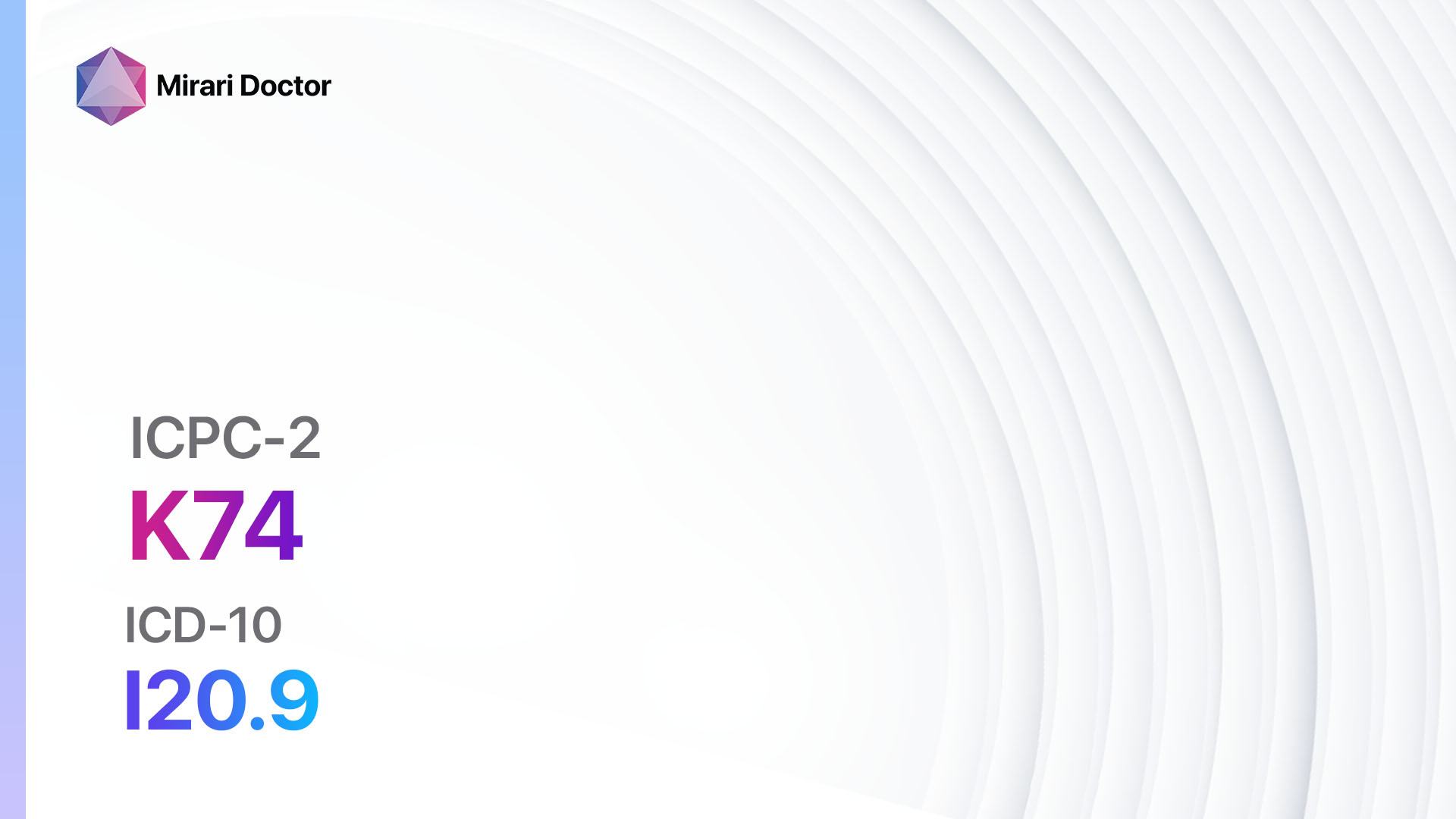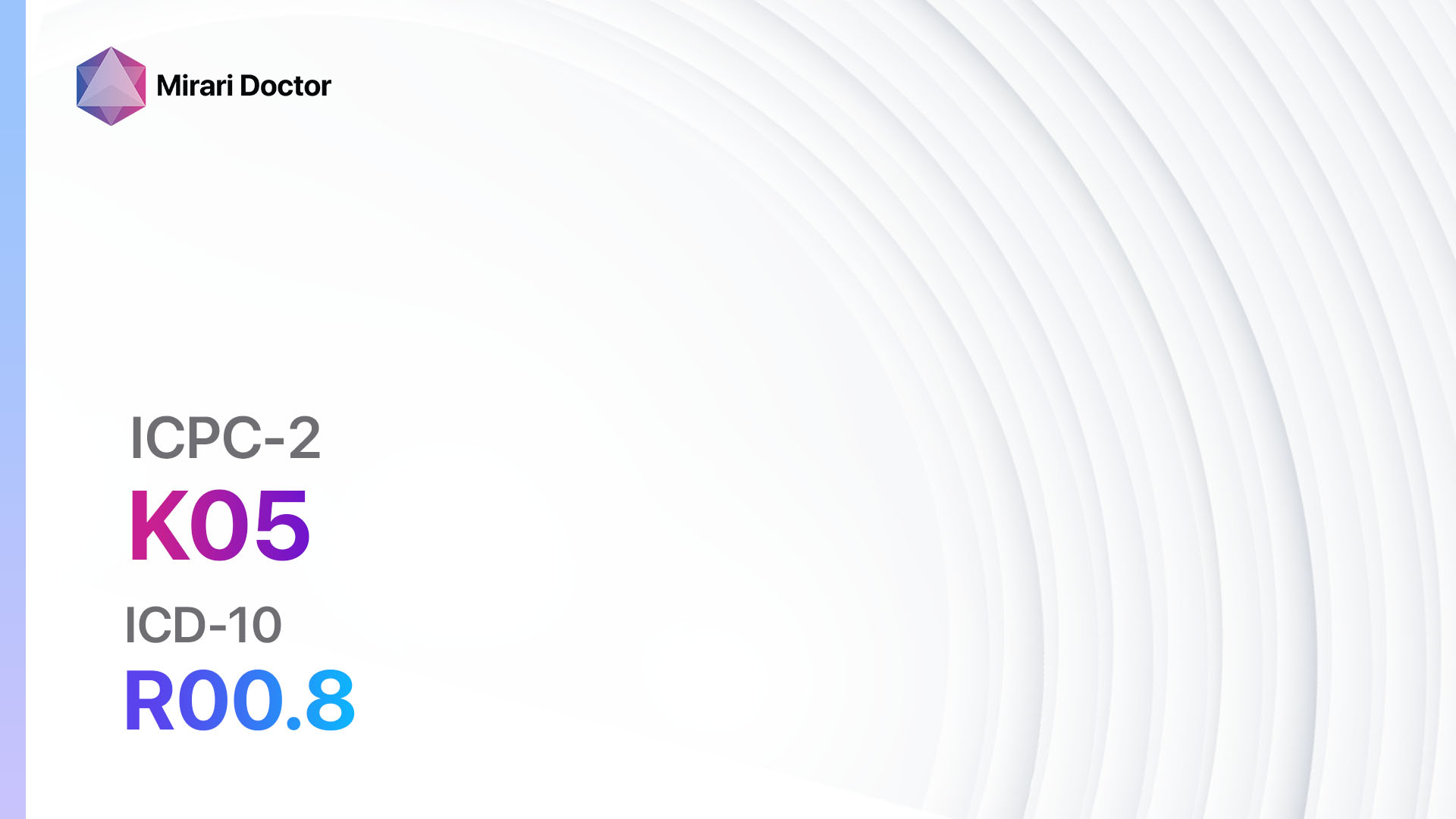
Introduction
Irregular heartbeat, also known as arrhythmia, is a condition characterized by abnormal heart rhythms[1]. It can range from harmless to life-threatening and may be a sign of an underlying heart condition[2]. The aim of this guide is to provide healthcare professionals with a comprehensive overview of the diagnostic steps, possible interventions, and patient education for irregular heartbeat.
Codes
- ICPC-2 Code: K05 Irregular heartbeat other[3]
- ICD-10 Code: R00.8 Other and unspecified abnormalities of heart beat[4]
Symptoms
- Palpitations: Sensation of a racing, pounding, or fluttering heart[5].
- Fatigue: Feeling tired or exhausted[6].
- Dizziness or lightheadedness: Feeling faint or experiencing a loss of balance[7].
- Shortness of breath: Difficulty breathing or catching your breath[8].
- Chest pain or discomfort: Pressure, tightness, or pain in the chest[9].
- Fainting or near-fainting: Temporary loss of consciousness or feeling lightheaded[10].
Causes
- Heart disease: Coronary artery disease, heart attack, heart failure, or valve disorders.
- High blood pressure: Increased pressure in the arteries.
- Thyroid problems: Overactive or underactive thyroid gland.
- Medications: Certain medications can cause irregular heart rhythms.
- Alcohol or drug abuse: Excessive alcohol consumption or illicit drug use.
- Stress or anxiety: Emotional or psychological stress.
- Other medical conditions: Diabetes, sleep apnea, electrolyte imbalances, or genetic disorders.
Diagnostic Steps
Medical History
- Gather information about the patient’s symptoms, including frequency, duration, and triggers.
- Identify any risk factors, such as family history of heart disease or previous heart conditions.
- Assess the patient’s medical history, including any existing medical conditions or medications.
- Inquire about lifestyle factors, such as alcohol or drug use, stress levels, and exercise habits.
Physical Examination
- Measure the patient’s blood pressure, heart rate, and rhythm.
- Listen to the heart sounds using a stethoscope to detect any abnormal rhythms or murmurs.
- Check for signs of heart failure, such as fluid retention or swollen ankles.
- Assess for other physical signs, such as enlarged thyroid gland or abnormal lung sounds.
Laboratory Tests
- Complete blood count (CBC): To check for anemia or infection.
- Thyroid function tests: To assess thyroid hormone levels.
- Electrolyte panel: To evaluate the levels of potassium, sodium, and other electrolytes.
- Cardiac enzymes: To rule out a heart attack.
- Lipid profile: To assess cholesterol levels and evaluate the risk of heart disease.
Diagnostic Imaging
- Electrocardiogram (ECG): To record the electrical activity of the heart and detect any abnormal rhythms.
- Holter monitor: A portable ECG device worn by the patient for 24 to 48 hours to capture intermittent arrhythmias.
- Echocardiogram: Uses sound waves to create images of the heart and assess its structure and function.
- Stress test: Measures the heart’s response to physical exertion and can help identify exercise-induced arrhythmias.
- Cardiac MRI or CT scan: Provides detailed images of the heart to evaluate its structure and function.
Other Tests
- Electrophysiology study: Invasive procedure to assess the electrical activity of the heart and identify the source of the arrhythmia.
- Tilt table test: Evaluates the heart’s response to changes in body position and can help diagnose certain types of arrhythmias.
- Genetic testing: May be recommended in cases of suspected inherited arrhythmias or underlying genetic disorders.
Follow-up and Patient Education
- Schedule regular follow-up appointments to monitor the patient’s condition and adjust treatment if necessary.
- Educate the patient about the importance of adhering to prescribed medications and lifestyle modifications.
- Provide information on recognizing and managing symptoms, including when to seek immediate medical attention.
- Discuss the potential complications of untreated or poorly controlled arrhythmias.
- Encourage the patient to maintain a healthy lifestyle, including regular exercise, a balanced diet, and stress management techniques.
Possible Interventions
Traditional Interventions
Medications:
Top 5 drugs for irregular heartbeat:
- Beta-blockers (e.g., Metoprolol, Atenolol):
- Cost: Generic versions are typically <$30/month.
- Contraindications: Severe bradycardia, uncontrolled heart failure.
- Side effects: Fatigue, dizziness, bradycardia.
- Severe side effects: Bronchospasm, heart block.
- Drug interactions: Calcium channel blockers, insulin.
- Warning: Should not be abruptly stopped.
- Calcium channel blockers (e.g., Diltiazem, Verapamil):
- Cost: Generic versions can be $10-$50/month.
- Contraindications: Severe hypotension, heart failure.
- Side effects: Headache, dizziness, constipation.
- Severe side effects: Bradycardia, heart block.
- Drug interactions: Beta-blockers, grapefruit juice.
- Warning: Regular blood pressure monitoring required.
- Antiarrhythmic agents (e.g., Amiodarone, Flecainide):
- Cost: Generic versions can be $10-$100/month.
- Contraindications: Severe bradycardia, heart block, lung disease.
- Side effects: Fatigue, dizziness, nausea.
- Severe side effects: Pulmonary toxicity, liver damage.
- Drug interactions: Beta-blockers, grapefruit juice.
- Warning: Regular monitoring of thyroid and lung function required.
- Anticoagulants (e.g., Warfarin, Apixaban):
- Cost: Generic versions can be $10-$50/month.
- Contraindications: Active bleeding, history of intracranial hemorrhage.
- Side effects: Increased risk of bleeding.
- Severe side effects: Major bleeding, allergic reactions.
- Drug interactions: NSAIDs, other blood thinners.
- Warning: Regular monitoring of INR (International Normalized Ratio) required.
- Implantable devices (e.g., Pacemaker, Implantable cardioverter-defibrillator):
- Cost: Varies depending on the device and procedure.
- Contraindications: None.
- Side effects: Infection, device malfunction.
- Severe side effects: None.
- Drug interactions: None.
- Warning: Regular follow-up appointments required.
Alternative Drugs:
- Magnesium supplements: May help regulate heart rhythm. Cost: $5-$20/month.
- Potassium supplements: Can correct electrolyte imbalances. Cost: $5-$15/month.
- Fish oil: Omega-3 fatty acids may have antiarrhythmic effects. Cost: $10-$30/month.
- Coenzyme Q10: Antioxidant that may support heart health. Cost: $10-$40/month.
- Vitamin D: Deficiency has been associated with arrhythmias. Cost: $5-$15/month.
Surgical Procedures:
- Catheter ablation: Invasive procedure to destroy abnormal heart tissue causing the arrhythmia. Cost: $15,000 to $50,000.
- Pacemaker implantation: Surgical placement of a device that regulates the heart’s electrical activity. Cost: $20,000 to $50,000.
- Implantable cardioverter-defibrillator (ICD) implantation: Surgical placement of a device that monitors and corrects life-threatening arrhythmias. Cost: $30,000 to $100,000.
- Maze procedure: Open-heart surgery to create scar tissue that redirects electrical signals in the heart. Cost: $50,000 to $150,000.
- Coronary artery bypass surgery (CABG): Redirects blood around blocked or narrowed coronary arteries. Cost: $70,000 to $200,000.
Alternative Interventions
- Acupuncture: May help regulate heart rhythm and reduce stress. Cost: $60-$120 per session.
- Yoga and meditation: Can promote relaxation and stress reduction. Cost: Varies depending on the class or instructor.
- Herbal supplements: Certain herbs, such as hawthorn or motherwort, may have potential benefits for heart health. Cost: Varies depending on the specific supplement.
- Biofeedback: Teaches patients to control their heart rate and rhythm through relaxation techniques. Cost: $50-$150 per session.
- Chiropractic care: May help improve overall health and reduce stress. Cost: $50-$200 per session.
Lifestyle Interventions
- Regular exercise: Engaging in moderate aerobic exercise for at least 150 minutes per week can improve heart health. Cost: Varies depending on the chosen activity (e.g., gym membership, fitness classes).
- Healthy diet: Following a balanced diet rich in fruits, vegetables, whole grains, and lean proteins can support heart health. Cost: Varies depending on food choices and dietary preferences.
- Stress management: Practicing stress-reducing techniques, such as deep breathing exercises, mindfulness, or hobbies, can help manage irregular heartbeat. Cost: Varies depending on the chosen method (e.g., yoga class, meditation app).
- Limiting alcohol and caffeine: Excessive alcohol and caffeine consumption can trigger or worsen irregular heart rhythms. Cost: Varies depending on personal habits.
- Quitting smoking: Smoking is a major risk factor for heart disease and can worsen irregular heart rhythms. Cost: Varies depending on the chosen smoking cessation method (e.g., nicotine replacement therapy, counseling).
It is important to note that the cost ranges provided are approximate and may vary depending on the location and availability of the interventions. It is recommended to consult with a healthcare professional for personalized treatment options and cost estimates.
Mirari Cold Plasma Alternative Intervention
Understanding Mirari Cold Plasma
- Safe and Non-Invasive Treatment: Mirari Cold Plasma is a safe and non-invasive treatment option for various skin conditions. It does not require incisions, minimizing the risk of scarring, bleeding, or tissue damage.
- Efficient Extraction of Foreign Bodies: Mirari Cold Plasma facilitates the removal of foreign bodies from the skin by degrading and dissociating organic matter, allowing easier access and extraction.
- Pain Reduction and Comfort: Mirari Cold Plasma has a local analgesic effect, providing pain relief during the treatment, making it more comfortable for the patient.
- Reduced Risk of Infection: Mirari Cold Plasma has antimicrobial properties, effectively killing bacteria and reducing the risk of infection.
- Accelerated Healing and Minimal Scarring: Mirari Cold Plasma stimulates wound healing and tissue regeneration, reducing healing time and minimizing the formation of scars.
Mirari Cold Plasma Prescription
Video instructions for using Mirari Cold Plasma Device – K05 Irregular heartbeat other (ICD-10:R00.8)
| Mild | Moderate | Severe |
| Mode setting: 1 (Infection) Location: 5 (Lungs) Morning: 15 minutes, Evening: 15 minutes |
Mode setting: 1 (Infection) Location: 5 (Lungs) Morning: 30 minutes, Lunch: 30 minutes, Evening: 30 minutes |
Mode setting: 1 (Infection) Location: 5 (Lungs) Morning: 30 minutes, Lunch: 30 minutes, Evening: 30 minutes |
| Mode setting: 2 (Wound Healing) Location: 5 (Lungs) Morning: 15 minutes, Evening: 15 minutes |
Mode setting: 2 (Wound Healing) Location: 5 (Lungs) Morning: 30 minutes, Lunch: 30 minutes, Evening: 30 minutes |
Mode setting: 2 (Wound Healing) Location: 5 (Lungs) Morning: 30 minutes, Lunch: 30 minutes, Evening: 30 minutes |
| Mode setting: 7 (Immunotherapy) Location: 1 (Sacrum) Morning: 15 minutes, Evening: 15 minutes |
Mode setting: 7 (Immunotherapy) Location: 1 (Sacrum) Morning: 30 minutes, Lunch: 30 minutes, Evening: 30 minutes |
Mode setting: 7 (Immunotherapy) Location: 1 (Sacrum) Morning: 30 minutes, Lunch: 30 minutes, Evening: 30 minutes |
| Mode setting: 7 (Immunotherapy) Location: 4 (Heart, Bile & Pancreas) Morning: 15 minutes, Evening: 15 minutes |
Mode setting: 7 (Immunotherapy) Location: 4 (Heart, Bile & Pancreas) Morning: 30 minutes, Lunch: 30 minutes, Evening: 30 minutes |
Mode setting:7 (Immunotherapy) Location: 4 (Heart, Bile & Pancreas) Morning: 30 minutes, Lunch: 30 minutes, Evening: 30 minutes |
| Total Morning: 60 minutes approx. $10 USD, Evening: 60 minutes approx. $10 USD |
Total Morning: 120 minutes approx. $20 USD, Lunch: 120 minutes approx. $20 USD, Evening: 120 minutes approx. $20 USD, |
Total Morning: 120 minutes approx. $20 USD, Lunch: 120 minutes approx. $20 USD, Evening: 120 minutes approx. $20 USD, |
| Usual treatment for 7-60 days approx. $140 USD – $1200 USD | Usual treatment for 6-8 weeks approx. $2,520 USD – $3,360 USD |
Usual treatment for 3-6 months approx. $5,400 USD – $10,800 USD
|
 |
|
Use the Mirari Cold Plasma device to treat Irregular heartbeat other effectively.
WARNING: MIRARI COLD PLASMA IS DESIGNED FOR THE HUMAN BODY WITHOUT ANY ARTIFICIAL OR THIRD PARTY PRODUCTS. USE OF OTHER PRODUCTS IN COMBINATION WITH MIRARI COLD PLASMA MAY CAUSE UNPREDICTABLE EFFECTS, HARM OR INJURY. PLEASE CONSULT A MEDICAL PROFESSIONAL BEFORE COMBINING ANY OTHER PRODUCTS WITH USE OF MIRARI.
Step 1: Cleanse the Skin
- Start by cleaning the affected area of the skin with a gentle cleanser or mild soap and water. Gently pat the area dry with a clean towel.
Step 2: Prepare the Mirari Cold Plasma device
- Ensure that the Mirari Cold Plasma device is fully charged or has fresh batteries as per the manufacturer’s instructions. Make sure the device is clean and in good working condition.
- Switch on the Mirari device using the power button or by following the specific instructions provided with the device.
- Some Mirari devices may have adjustable settings for intensity or treatment duration. Follow the manufacturer’s instructions to select the appropriate settings based on your needs and the recommended guidelines.
Step 3: Apply the Device
- Place the Mirari device in direct contact with the affected area of the skin. Gently glide or hold the device over the skin surface, ensuring even coverage of the area experiencing.
- Slowly move the Mirari device in a circular motion or follow a specific pattern as indicated in the user manual. This helps ensure thorough treatment coverage.
Step 4: Monitor and Assess:
- Keep track of your progress and evaluate the effectiveness of the Mirari device in managing your Irregular heartbeat other. If you have any concerns or notice any adverse reactions, consult with your health care professional.
Note
This guide is for informational purposes only and should not replace the advice of a medical professional. Always consult with your healthcare provider or a qualified medical professional for personal advice, diagnosis, or treatment. Do not solely rely on the information presented here for decisions about your health. Use of this information is at your own risk. The authors of this guide, nor any associated entities or platforms, are not responsible for any potential adverse effects or outcomes based on the content.
Mirari Cold Plasma System Disclaimer
- Purpose: The Mirari Cold Plasma System is a Class 2 medical device designed for use by trained healthcare professionals. It is registered for use in Thailand and Vietnam. It is not intended for use outside of these locations.
- Informational Use: The content and information provided with the device are for educational and informational purposes only. They are not a substitute for professional medical advice or care.
- Variable Outcomes: While the device is approved for specific uses, individual outcomes can differ. We do not assert or guarantee specific medical outcomes.
- Consultation: Prior to utilizing the device or making decisions based on its content, it is essential to consult with a Certified Mirari Tele-Therapist and your medical healthcare provider regarding specific protocols.
- Liability: By using this device, users are acknowledging and accepting all potential risks. Neither the manufacturer nor the distributor will be held accountable for any adverse reactions, injuries, or damages stemming from its use.
- Geographical Availability: This device has received approval for designated purposes by the Thai and Vietnam FDA. As of now, outside of Thailand and Vietnam, the Mirari Cold Plasma System is not available for purchase or use.
References
-
- American Heart Association. (2023). About Arrhythmia. https://www.heart.org/en/health-topics/arrhythmia/about-arrhythmia
- Mayo Clinic. (2022). Heart arrhythmia. https://www.mayoclinic.org/diseases-conditions/heart-arrhythmia/symptoms-causes/syc-20350668
- World Health Organization. (2022). International Classification of Primary Care (ICPC-2). https://www.who.int/standards/classifications/other-classifications/international-classification-of-primary-care
- Centers for Disease Control and Prevention. (2022). International Classification of Diseases, Tenth Revision, Clinical Modification (ICD-10-CM). https://www.cdc.gov/nchs/icd/icd10cm.htm
- American Heart Association. (2023). Symptoms and Diagnosis of Arrhythmia. https://www.heart.org/en/health-topics/arrhythmia/symptoms-diagnosis–monitoring-of-arrhythmia
- National Heart, Lung, and Blood Institute. (2022). Arrhythmia. https://www.nhlbi.nih.gov/health-topics/arrhythmia
- Diez, Emiliano ; Sánchez, Jose ; Prado, Natalia ; Ponce Zumino, Amira ; García-Dorado, David ; Miatello, Roberto ; Rodríguez-Sinovas, Antonio (2019). Ischemic Postconditioning Reduces Reperfusion Arrhythmias by Adenosine Receptors and Protein Kinase C Activation but Is Independent of KATP Channels or Connexin 43. DOI: 10.3390/ijms20235927
- Yıldırım, Özal ; Pławiak, Paweł ; Tan, Ru-San ; Acharya, U. Rajendra (2018). Arrhythmia detection using deep convolutional neural network with long duration ECG signals. DOI: 10.1016/j.compbiomed.2018.09.009
- Acharya, U. Rajendra ; Fujita, Hamido ; Lih, Oh Shu ; Hagiwara, Yuki ; Tan, Jen Hong ; Adam, Muhammad (2017). Automated detection of arrhythmias using different intervals of tachycardia ECG segments with convolutional neural network. DOI: 10.1016/j.ins.2017.04.012
- Savalia, Shalin ; Emamian, Vahid (2018). Cardiac Arrhythmia Classification by Multi-Layer Perceptron and Convolution Neural Networks. DOI: 10.3390/bioengineering5020035
Related articles
Made in USA


